Helen Walsh's Blog, page 2
January 29, 2024
Letterbox: Bookish & Filmish
Ever heard of Anna Maria Island? I hadn’t either until my friend Susan let me in on this secret ‘old Florida’ gem that flies mostly under the radar screen.
That is bound to change with magazines like Travel + Leisure naming it to the 2024 Must-Visit lists, although fingers crossed local council seems determined to preserve its essential unspoiled nature.
AMI is the most northern of a string of barrier islands near Sarasota that run down the gulf side to the Florida Keys. Immediately to its south is Longboat Key, AMI’s anti-Christ with its mega-mansions, gated communities and serial Lamborghinis. Below that is Siesta Key, favourite of the partiers and home to many writers over the years, including famed crime novelist John D MacDonald who I loved to read growing up.
And Casey Key – a smidge south – is home to Stephen King. South Florida’s “languid sleaze, racy sense of promise and breath-grabbing beauty” is apparently irresistible to the scribe.
There are no large condos or hotels to block views of the water on Anna Maria Island. No private beaches. No chain restaurants. There are, however, seven miles of glorious powdery white sand beaches to walk, with turquoise waters and pretty amazing sunsets.

I went to Florida because, let’s be honest, sometimes you want the holiday equivalent of a nice bowl of pasta. Comforting, familiar and nothing that’s going to rock your boat. Roads you can cruise along with your window down listening to Jimmy Buffett’s ‘gulf and western’ songs about booze and sex, knowing you should cringe at some of those ‘70s lyrics. But singing along about your lost shaker of salt, regardless.
Turns out, Anna Maria Island is so much more than easily digestible. And it got me thinking yet again about how travel can shake us out of preconceptions and safely held opinions, if we let it.
The speed limit on this sliver of an island is 25mph, but almost no-one works themselves up to that. A free trolley ferries passengers from tip to tail; there’s also rental bikes and golf carts, nature trails and old-style piers that beg to be ambled along or fished off.
A community theatre group – The Island Players – offers a full season to its residents and visitors. I enjoyed an evening watching that old Agatha Christie chestnut The Mousetrap in its lovely purpose-built theatre, whose enthusiastic embrace by its sold-out audience was moving.
I kayaked a little further north at Shell Key Preserve, an 1,828-acre archipelago that is an extraordinary place to see birds – including two bald eagles that soared above us as we cut across the water – and other wildlife.
For all its shopping malls and wacko politicians, Florida is also abundant with nature, and efforts to preserve it. Thousands of miles of ocean coastline and tidal shorelines, marshes and mangroves, freshwater wetlands and springs. There are massive parks, preserves, trails, bird sanctuaries and wildlife refuges to visit. They make it easy for you to be as active as you want to be.

Sarasota is an undisputed cultural centre with theatre, opera, symphony, ballet, art museums and restaurants. It’s also circus country – arguably the single most dominant form of entertainment in America at a time before multiple screens began to compete for our attention.
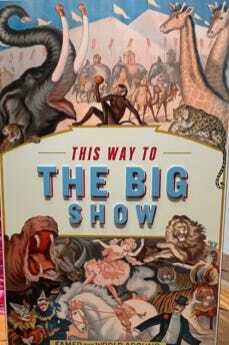
In 1884, the 5 Ringling brothers – Albert, Otto, Alfred, Charles and John – of Bariboo, Wisconsin were determined to start their own circus, at first performing in a vacant lot across from their town’s square, under a homemade tent held up by poles and stakes cut from the nearby woods.
(Circus itself was first brought to the US from the UK in 1793 by John Bill Ricketts. Hachaliah Bailey established one of the earliest American circuses around 1806.)
The Ringling Bros was a great success despite their lack of animals. Instead, they had contortionists, balancers, comedy acts, tumblers, jugglers and lots of music, with the brothers doing most of the performing.
By the following year, they began to tour as the Ringling Brothers: Great Double Shows, Circus Caravan and Trained Animal Exposition, with the addition of a bandwagon, and a museum tent filled with stuffed parrots and a collection of live songbirds and small animals. The show grew quickly: by 1891 they’d expanded the big top to present three rings and were touring by rail.
For almost a hundred years from the 1850s, circus ruled as America’s most popular form of entertainment. It ranked right up there with Thanksgiving, Christmas and the Fourth of July – people emptied onto the street to watch the animals and performers roll into town.
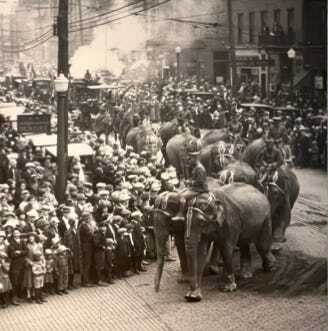
In the 1890s, Barney and Bailey’s “Greatest Show on Earth” was the largest circus. But when James Bailey decided in 1897 to travel his show in Europe for five years, he underestimated the growing popularity of the Ringling circus. Upon his return, he faced a formidable competitor; when Bailey died in 1906, the Ringling Bros bought out their biggest rival.
By 1919, labour shortages and complications to rail travel brought about by WWI prompted Ringling to start touring the two circuses together. It was an enormous undertaking – more than 1,100 employees, 735 horses and almost 1,000 other animals travelling in 90-100 double length rail cars.
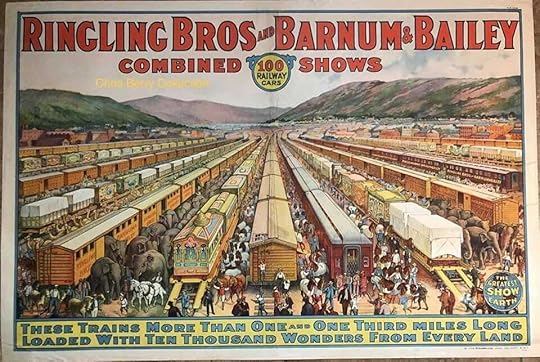
So, why Sarasota? In 1904, John Ringling and his wife Mable bought a private railcar from Pullman they named “The Wisconsin” after his home state. In 1912, the couple first travelled to Sarasota and fell in love with the area. As importantly, John saw enormous potential in the undeveloped state, and bought huge amounts of real estate, which made him a fortune. Others followed suit.

In 1927, they moved the winter home for the circus to Sarasota, an enormous economic boom to the city. They bought a estate on the water and built an ornate 32-room home they called Ca’d’zan (Venetian for ‘house of John’). They also erected a pink Italianate building reminiscent of a Renaissance palazzo to house their extensive art collection (including many works by Peter Paul Rubens, Poussin and Van Dyck) as well as the Astor’s music and dining rooms when their NYC mansion was torn down.

When John Ringling died in 1936, he continued his record of philanthropy to Sarasota by gifting the 66-acre estate and everything in it to the city.
The term ‘Bread and Circuses’ is attributed to Juvenal, a Roman poet active in the late first and early second century AD. People allow themselves to be diverted from important matters, he argued, when given opiates like bread and circus juggling acts to keep them appeased and docile.
Humankind sitting in superior judgement of others is nothing new.
The reality is bread is tasty, and circuses are fun. And popularity carries its own legitimacy. Our 20th century sensibilities recognize the human and animal rights abuses that happened in early circuses, and we should be thankful to the activism that cleaned them up.
At the same time, circus provided a home and sense of family to tens of thousands of performers over the years. It helped ordinary people survive a civil war, two world wars and a great depression, among other world events.
In truth, I’d never thought too closely about circuses before I visited Sarasota and Anna Maria Island. I’d gone once or twice as a child; and as an adult, I often buy tickets to the human circuses programmed into the Edinburgh Fringe Festival. The storytelling artistry and breath-taking physical skills are second to none, and I enjoy them as I would any other kind of physical theatre.
It can sometimes seem these days that we live in a puritanical age where holding a strong or overwhelming opinion somehow equates to objective truth, and thus can never be legitimately questioned. We’ve also seen a distressing return of book-banning and blacklisting, often under the guise of ‘community standards’ or ‘community accountability.’
Everywhere, and in everyone, there is more than meets the initial gaze. Contradictions and dichotomies; the weird and the wacky, the silly and the profound. Thank goodness, yes? To dismiss complexity in favour of rigidity is one reason for this war-torn, challenged world of ours.
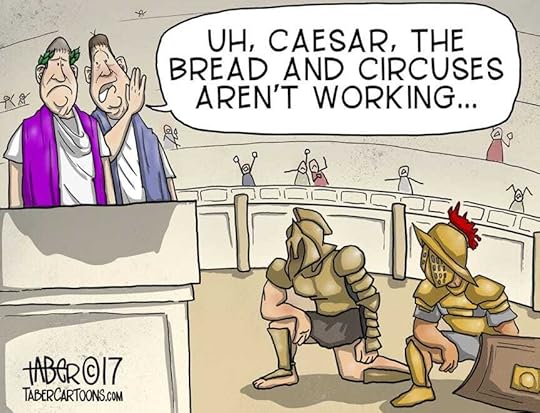
Humans differentiate from other species due to our capacity for nested scenario building, which allows us to imagine several alternative situations and embed them into a larger narrative of connected events. And because we have an urge to connect, to exchange thoughts with others, to achieve more together than we can apart.
So here’s to more bread (preferably whole-grain!) and a circus of riotous and contradictory opinion through which we may challenge each other and grow.
Circus FilmsCecil B DeMille’s 1952 classic, The Greatest Show on Earth, won the Oscar for Best Picture. It starred Charlton Heston, Jimmy Stewart and Dorothy Lamour, along with the real Ringling Bros and Barnum and Bailey’s circus troupe of 1,400 people, hundreds of animals and 50 railroad cars of equipment and tents. The film premiered in Sarasota, at what is now the Sarasota Opera House.
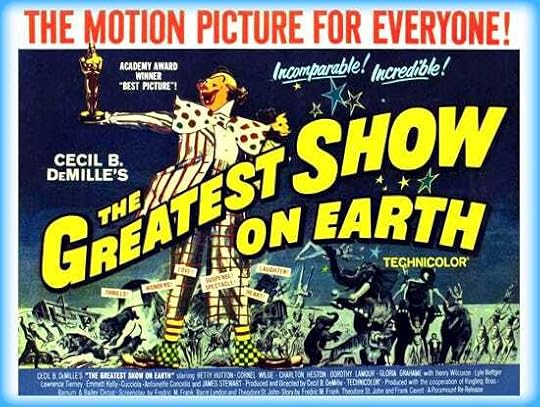
It was the first movie Steven Spielberg ever saw; he credits it as a major inspiration for his film career. The movie got its fair share of criticism, especially winning the Oscar against such films as High Noon, The Quiet Man, and Ivanhoe.
Some argue it won because of the McCarthyite political climate in Hollywood at the time; DeMille was a Republican while the producer of High Noon would soon find himself on the blacklist, as would one of the Ivanhoe writers. Others argued it was the last chance for DeMille to win a competitive Oscar, given his best work had been done in the silent film era. Either way, controversy surrounding the Oscars’ nomination list continues.
Another circus film was the 2017 The Greatest Showman starring Hugh Jackman, Zac Efron, Michelle Williams, Rebecca Ferguson, and Zendaya based on the life story of P.T. Barnum. That film gained a cult following, bofo box office, and nominations and wins at the Golden Globes and Oscars.
**
Reading South FloridaThe wild and weird of Florida permeates every Carl Hiassen book, along with side-splitting humour, eccentric characters and pointed messages about environmentalism, political corruption and over development.
I also highly recommend The Orchid Thief by Susan Orelan, based on her two-year investigation of the arrest of plant dealer John Laroche and a group from the Seminole First Nation for poaching rare orchids in the Fakahatchee Strange State Preserve. Then there’s the strange and wonderful Charlie Kaufman film, Adaptation, where Nicholas Cage plays a fictionalized Kaufman trying to adapt Orlean’s book.
As mentioned above, author John D MacDonald (Travis McGee series) lived on Siesta Key and used local places liberally in his work. Carl Hiaasen says of MacDonald that he was “the first modern writer to nail Florida dead-center, to capture all its languid sleaze, racy sense of promise and breath-grabbing beauty.”
Crime writer Ed McBain lived in Sarasota for many years and set his Matthew Hope series is his adopted city, as did Stuart Kaminsky with his Lew Fonesca books.
And Stephen King – possibly Sarasota’s most famous resident, albeit very private – wrote about a fictionalized version of Casey Key, where he now lives part-time. He first came to Florida to recover from a near fatal accident that left him addicted to painkillers, an experience which clearly influences the novel.
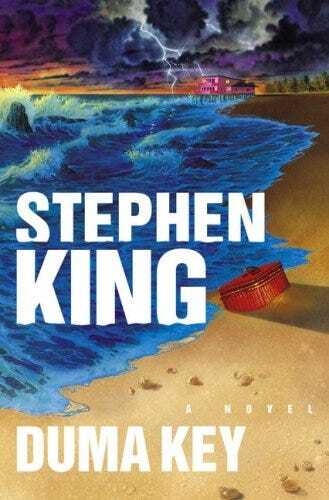
Bye for now. Thank you for joining me for this twenty-sixth edition of Letterbox .
January 5, 2024
Matera (Italy), Dublin and 2024 Watchlist.
Happy new year, friends! I’m so glad you’re all here reading Letterbox – thank you for keeping me company 🙏
Matera – Arrival, Departure, Arrival (or why leadership matters).The stunning opening scenes of the 2021 James Bond film, No Time to Die, were shot in Matera, a city I visited in November.
Matera is located in the Italian province of Basilicata, a smidge over the border from Puglia (but formerly part of it). It’s either the third oldest city in the world, after Aleppo and Jericho and/or the oldest continually habituated city in the world, depending on who’s telling the story. Either way, it’s no spring chicken, dating back to the Paleolithic period (2.5 millions years ago to 10,000 BC).
UNESCO – the United Nations Educational, Scientific and Cultural Organization – added Matera to its list of world heritage sites in 1993, dramatically shifting the narrative arc for this city of caves once known in the 1950s as The Shame of Italy. And therein lies a story with more twists and turns than Daniel Craig’s wild, high-speed car chase in his character’s beloved Aston Martin DB5.
Matera is a remarkable example of ‘negative architecture,’ its dwellings chiselled out of calcarenite rock at a time when man had only the most basic of tools. The myriad of caves were gradually burrowed deeper and expanded into living spaces throughout the classical and medieval eras.
The old town is shaped like an inverted W, with two ‘Sassi’ on each side and a large hill in the middle. Across is a park where you can access more caves and rock churches; those ones were mostly closed when I was there because of a bun fight between different levels of government. (Plus ça change. . .)

Each Sassi is a higgledy piggledy series of honeycombed terraces on a steep ravine with approximately 1,500 grottos that jut out and over the others. To describe these homes as small is a gross understatement; a family of 10-12 would have resided in a one-room windowless cave with children sleeping on the floor or in drawers, and the family livestock pushed to the back at night to stop poachers from stealing them.
(No photos are allowed inside the re-enactment caves that serve as museums today, or in the surviving rock churches, or I would include here.)
Most cooking was done communally, and of course there was no indoor plumbing, although the ancient dwellers built a brilliant underground cistern system from the nearby Gravina River.
This all worked well for thousands of years, with every class of people living together in the Sassi. Eventually, though, as humans do, the inhabitants began to segregate based on class, with the clergy and other privileged folks moving up the hill, and the poor people remaining below.
By the 19th century, a population explosion overwhelmed the infrastructure. With no sanitation, disease spread. Life was hard. Everyone knew everyone’s business and had an opinion on it. It was the original social media, but without the memes.

Over the years, the government did little to address the “Southern Problem” of extreme poverty and desperate living conditions, until shamed into it after author Carlo Levi published his 1945 memoir Christ Stopped at Eboli. The book chronicled his year of political exile spent in Basilicata (then known as Lucania) under the fascists.
The south had not widely supported Mussolini and fascism (nor had they decades earlier supported the unification of Italy). Despite his status as a political exile, Levi was welcomed with open arms by the villages he visited. Matera was not the major focus of his book; indeed, it took up no more than a few pages. But he singled out the Sassi for their tragic beauty and decay:
Like a schoolboy’s idea of Dante’s Inferno…dark holes riddled with filth and disease, where barnyard animals were kept in dank corners, chickens ran across the dining room tables, and infant mortality rates were horrendous, thanks to rampant malaria, trachoma and dysentery.
The book caused an uproar in postwar Italy and around the world, coming to be known as as la vergogna nazionale, the disgrace of the nation.

Suddenly, the question of what to do with the Sassi was on everyone’s lips. The government decided to force the relocation of roughly 16,000 people to five new settlements they built at the top of the hill. Marshall Plan money flowed in.
The decision wasn’t universally popular. The Sassi may have been cramped and disease-ridden, but it was also home. And then there was the social life, where everyone lived outside in the courtyard and looked out for each other through every difficulty, especially important since they couldn’t rely on the government to act in their interest.
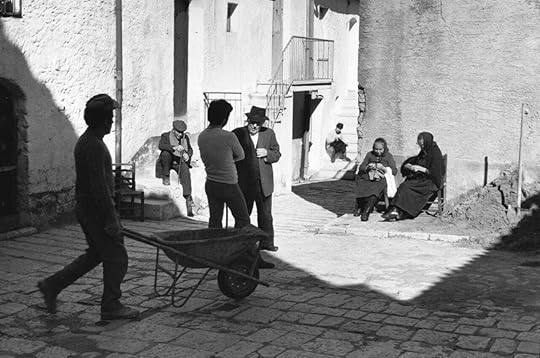
(One of the amazing historical photos of the Sassi taken by Henri Cartier-Bresson.)
It took a decade to clear the people out by bribe or by force. It’s estimated 90% relocated; the remainder were too stubborn or too frightened to go. But because they stayed, Matera can claim the oldest continually inhabited place in the world.
The decades that followed were not pretty. Any maintenance or services disappeared; the residents were on their own. Buildings fell into dangerous disrepair. Squatters, thieves and smugglers moved in.
Meanwhile, in the 1960s a group of students began to agitate against the focus on Matera’s failures of the previous 100 years, versus the success of the 9,000 that came before it. They documented the archeological treasures of the Sassi, including cave churches with priceless Byzantine frescoes. By then, Carlo Levi had become a senator and supported their efforts for conservation funds.
Slowly, artists started to drift into abandoned buildings. By the 1980s, the group of students had become part of the political class and were still actively working to save the Sassi. Their efforts to write a counter-narrative on Matera gained ground.
In film scripts based on a three-act story structure, there’s a plot twist that separates the second and third act, making inevitable the outcome of the movie. In real life, this was UNESCO’s 1993 designation of the Sassi as a world heritage site, calling it:
The most outstanding, intact example of a troglodyte settlement in the Mediterranean region, perfectly adapted to its terrain and ecosystem.
And a world heritage site cannot be left to rot and wither. So, now the Italian government had the world sitting in judgement once again about Matera. Decades after forcing people to leave by carrot and by stick, they asked them to go back.
In the thirty years since, huge amounts of EU funds have been spent to restore the Sassi. There are now chic cave hotels, and fine restaurants. Articles in Condé Nast Traveller and endless tourist selfies. A European capital of culture designation and tons of movie productions (it often doubles for ancient Jerusalem).
Of course, there is no shame in poverty, only in a world of such unequal distribution. And in governments whose leaders fail their citizens – whether because of neglect, or corruption, or addiction to symbolic acts or wedge politics that appeals to heightened emotions but does little to better people’s lives in the here and now.

After Italy, I went to Ireland to visit family, stopping in Dublin for a few days to see friends. Parts of the city were still locked down from the violent anti-immigration riots that had rocked it following the stabbing attacks on young children at a school.
Everyone had an opinion that either condemned the mostly young male protestors, or ‘contextualized’ the reaction due to a severe lack of housing, unequal social benefits and rapid social change, while still decrying the anti-immigrant sentiment.
One thing everyone agreed upon, though, was a belief that all Ireland’s political parties had pandered to partisan politics in their reaction to the crisis, instead of providing strong leadership to their community. Wedging works - until it doesn’t, and they vote you out.
The funeral procession for Shane McGowan of the Pogues took place when I was in Dublin, and thousands lined the streets to pay their respects. The Irish do death well, but they live life fully, too. This musical performance clip of Fairytale of New York from McGowan’s funeral will have you dancing in your chair 🙂

But what struck me most in both Italy and in Dublin - beyond the need for good political leadership – is the resiliency of individual people and of the communities they form. That too is leadership, and it’s worth celebrating.
Books & Film.Just a fraction of the novels/poetry on my 2024 Books Watchlist:
A Year of Last Things, Michael Ondaatje, M&S March 2024. A new poetry collection that rediscovers the influence of every border he’s crossed as a self-described ‘mongrel’ of diverse cultures. As the daughter of immigrants, I’ve always been fascinated by experiences of migration.
Who By Fire, by Greg Rhyno, Cormorant Books April 2024. Launch of a new female sleuth series and who doesn’t love those.
What’s Not Mine, by Nora Decter, ECW Press April 2024. For fans of Miriam Toews, an absorbing, darkly funny story of family, addiction, and survival.
Wild Houses by Colin Barrett, set amidst violence and chaos in western Ireland, by the now Toronto-based author, M&S March 2024.
The Phoenix Crown, by historical novelists Janie Chang and Kate Quinn, set in 1906 San Francisco. Harper Collins Feb 2024.
A Friend in the Dark, Samantha Bailey, Thomas & Mercer, March 2024. I’ve got chills, they’re multiplying. . .
**
In my January 2023 Letterbox I included some film recommendations while I was at the Sundance Festival. That includes PAST LIVES, a truly breathtaking movie that has received 5 Golden Globe nominations including best pic, director, screenplay + actress, and is heavily expected to receive several Oscar noms. Writer/director Celine Song (a Korean-Canadian New Yorker) is currently shooting her second film, MATERIALISTS, about a NYC matchmaker. It’s definitely on my watchlist.
As is the following book adaptations: THE MAID by Nita Prose, set to star Florence Pugh; HAMNET, the fantastic Maggie O’Farrell novel directed by one of my favs Chloé Zhao (who is writing the screenplay with the author) and produced by Sam Mendes; THE CHAIN by another fav author Adrian McKinty; The NIGHTINGALE by Kristin Hannah (I’ve read other of her books but not that one). Plus ONE LOVE about Bob Marley, the latest in the KNIVES OUT and KINGSMEN franchises; a new film by playwright Martin McDonagh; and APEX because I love Formula One.
I’ve just joined the social platform Letterboxd. (I know, the name). If you’re on there, let’s connect. It’s like Goodreads for film lovers without the nastiness or review bombing. (And yes, something really must be done about the hot mess that is Goodreads.) Like all my social platforms: @HelenWalshBooks
These little ceramic pumi abound in Puglia. Shaped like flower buds, they ward off il Malocchio (the evil eye). The word pumo comes from the latin pomum, or fruit. It’s important to never buy one for yourself, because you can’t buy yourself luck. But you can increase the odds of it for others. So please accept these digital pumi as my hope that the coming year opens up for each of you in surprising and abundant ways.

Bye for now. Thank you for joining me for this twenty-sixth edition of Letterbox .
Letterbox: Bookish & Filmish is a reader-supported publication. To receive new posts and support my work, consider becoming a free or paid subscriber.
Letterbox: Bookish & Filmish
Happy new year, friends! I’m so glad you’re all here reading Letterbox – thank you for keeping me company 🙏
Matera – Arrival, Departure, Arrival (or why leadership matters).The stunning opening scenes of the 2021 James Bond film, No Time to Die, were shot in Matera, a city I visited in November.

Matera is located in the Italian province of Basilicata, a smidge over the border from Puglia (but formerly part of it). It’s either the third oldest city in the world, after Aleppo and Jericho and/or the oldest continually habituated city in the world, depending on who’s telling the story. Either way, it’s no spring chicken, dating back to the Paleolithic period (2.5 millions years ago to 10,000 BC).
UNESCO – the United Nations Educational, Scientific and Cultural Organization – added Matera to its list of world heritage sites in 1993, dramatically shifting the narrative arc for this city of caves once known in the 1950s as The Shame of Italy. And therein lies a story with more twists and turns than Daniel Craig’s wild, high-speed car chase in his character’s beloved Aston Martin DB5.
Matera is a remarkable example of ‘negative architecture,’ its dwellings chiselled out of calcarenite rock at a time when man had only the most basic of tools. The myriad of caves were gradually burrowed deeper and expanded into living spaces throughout the classical and medieval eras.
The old town is shaped like an inverted W, with two ‘Sassi’ on each side and a large hill in the middle. Across is a park where you can access more caves and rock churches; those ones were mostly closed when I was there because of a bun fight between different levels of government. (Plus ça change. . .)

Each Sassi is a higgledy piggledy series of honeycombed terraces on a steep ravine with approximately 1,500 grottos that jut out and over the others. To describe these homes as small is a gross understatement; a family of 10-12 would have resided in a one-room windowless cave with children sleeping on the floor or in drawers, and the family livestock pushed to the back at night to stop poachers from stealing them.
(No photos are allowed inside the re-enactment caves that serve as museums today, or in the surviving rock churches, or I would include here.)
Most cooking was done communally, and of course there was no indoor plumbing, although the ancient dwellers built a brilliant underground cistern system from the nearby Gravina River.
This all worked well for thousands of years, with every class of people living together in the Sassi. Eventually, though, as humans do, the inhabitants began to segregate based on class, with the clergy and other privileged folks moving up the hill, and the poor people remaining below.
By the 19th century, a population explosion overwhelmed the infrastructure. With no sanitation, disease spread. Life was hard. Everyone knew everyone’s business and had an opinion on it. It was the original social media, but without the memes.

Over the years, the government did little to address the “Southern Problem” of extreme poverty and desperate living conditions, until shamed into it after author Carlo Levi published his 1945 memoir Christ Stopped at Eboli. The book chronicled his year of political exile spent in Basilicata (then known as Lucania) under the fascists.
The south had not widely supported Mussolini and fascism (nor had they decades earlier supported the unification of Italy). Despite his status as a political exile, Levi was welcomed with open arms by the villages he visited. Matera was not the major focus of his book; indeed, it took up no more than a few pages. But he singled out the Sassi for their tragic beauty and decay:
Like a schoolboy’s idea of Dante’s Inferno…dark holes riddled with filth and disease, where barnyard animals were kept in dank corners, chickens ran across the dining room tables, and infant mortality rates were horrendous, thanks to rampant malaria, trachoma and dysentery.
The book caused an uproar in postwar Italy and around the world, coming to be known as as la vergogna nazionale, the disgrace of the nation.

Suddenly, the question of what to do with the Sassi was on everyone’s lips. The government decided to force the relocation of roughly 16,000 people to five new settlements they built at the top of the hill. Marshall Plan money flowed in.
The decision wasn’t universally popular. The Sassi may have been cramped and disease-ridden, but it was also home. And then there was the social life, where everyone lived outside in the courtyard and looked out for each other through every difficulty, especially important since they couldn’t rely on the government to act in their interest.

(One of the amazing historical photos of the Sassi taken by Henri Cartier-Bresson.)
It took a decade to clear the people out by bribe or by force. It’s estimated 90% relocated; the remainder were too stubborn or too frightened to go. But because they stayed, Matera can claim the oldest continually inhabited place in the world.
The decades that followed were not pretty. Any maintenance or services disappeared; the residents were on their own. Buildings fell into dangerous disrepair. Squatters, thieves and smugglers moved in.
Meanwhile, in the 1960s a group of students began to agitate against the focus on Matera’s failures of the previous 100 years, versus the success of the 9,000 that came before it. They documented the archeological treasures of the Sassi, including cave churches with priceless Byzantine frescoes. By then, Carlo Levi had become a senator and supported their efforts for conservation funds.
Slowly, artists started to drift into abandoned buildings. By the 1980s, the group of students had become part of the political class and were still actively working to save the Sassi. Their efforts to write a counter-narrative on Matera gained ground.
In film scripts based on a three-act story structure, there’s a plot twist that separates the second and third act, making inevitable the outcome of the movie. In real life, this was UNESCO’s 1993 designation of the Sassi as a world heritage site, calling it:
The most outstanding, intact example of a troglodyte settlement in the Mediterranean region, perfectly adapted to its terrain and ecosystem.
And a world heritage site cannot be left to rot and wither. So, now the Italian government had the world staring at it in judgement about Matera. Decades after forcing people to leave by carrot and by stick, they asked them to go back.
In the thirty years since, huge amounts of EU funds have been spent to restore the Sassi. There are now chic cave hotels, and fine restaurants. Articles in Condé Nast Traveller and endless tourist selfies. A European capital of culture designation and tons of movie productions (it often doubles for ancient Jerusalem).
Of course, there is no shame in poverty, only in a world of such unequal distribution. And in governments whose leaders fail their citizens – whether because of neglect, or corruption, or addiction to symbolic acts or wedge politics that appeals to heightened emotions but does little to better people’s lives in the here and now.

After Italy, I went to Ireland to visit family, stopping in Dublin for a few days to see friends. Parts of the city were still locked down from the violent anti-immigration riots that had rocked it following the stabbing attacks on young children at a school.
Everyone had an opinion that either condemned the mostly young male protestors, or ‘contextualized’ the reaction due to a severe lack of housing, unequal social benefits and rapid social change, while still decrying the anti-immigrant sentiment.
One thing everyone agreed upon, though, was a belief that all Ireland’s political parties had pandered to partisan politics in their reaction to the crisis, instead of providing strong leadership to their community. Wedging works - until it doesn’t, and they vote you out.
The funeral procession for Shane McGowan of the Pogues took place when I was in Dublin, and thousands lined the streets to pay their respects. The Irish do death well, but they live life fully, too. This musical performance clip of Fairytale of New York from McGowan’s funeral will have you dancing in your chair 🙂

But what struck me most in both Italy and in Dublin - beyond the need for good political leadership – is the resiliency of individual people and of the communities they form. That too is leadership, and it’s worth celebrating.
Books & Film.Just a fraction of the novels/poetry on my 2024 Books Watchlist:
A Year of Last Things, Michael Ondaatje, M&S March 2024. A new poetry collection that rediscovers the influence of every border he’s crossed as a self-described ‘mongrel’ of diverse cultures. As the daughter of immigrants, I’ve always been fascinated by experiences of migration.
Who By Fire, by Greg Rhyno, Cormorant Books April 2024. Launch of a new female sleuth series and who doesn’t love those.
What’s Not Mine, by Nora Decter, ECW Press April 2024. For fans of Miriam Toews, an absorbing, darkly funny story of family, addiction, and survival.
Wild Houses by Colin Barrett, set amidst violence and chaos in western Ireland, by the now Toronto-based author, M&S March 2024.
The Phoenix Crown, by historical novelists Janie Chang and Kate Quinn, set in 1906 San Francisco. Harper Collins Feb 2024.
A Friend in the Dark, Samantha Bailey, Thomas & Mercer, March 2024. I’ve got chills, they’re multiplying. . .
**
In my January 2023 Letterbox I included some film recommendations while I was at the Sundance Festival. That includes PAST LIVES, a truly breathtaking movie that has received 5 Golden Globe nominations including best pic, director, screenplay + actress, and is heavily expected to receive several Oscar noms. Writer/director Celine Song (a Korean-Canadian New Yorker) is currently shooting her second film, MATERIALISTS, about a NYC matchmaker. It’s definitely on my watchlist.
As is the following book adaptations: THE MAID by Nita Prose, set to star Florence Pugh; HAMNET, the fantastic Maggie O’Farrell novel directed by one of my favs Chloé Zhao (who is writing the screenplay with the author) and produced by Sam Mendes; THE CHAIN by another fav author Adrian McKinty; The NIGHTINGALE by Kristin Hannah (I’ve read other of her books but not that one). Plus ONE LOVE about Bob Marley, the latest in the KNIVES OUT and KINGSMEN franchises; a new film by playwright Martin McDonagh; and APEX because I love Formula One.
I’ve just joined the social platform Letterboxd. (I know, the name). If you’re on there, let’s connect. It’s like Goodreads for film lovers without the nastiness or review bombing. (And yes, something really must be gone about the hot mess that is Goodreads.) Like all my social platforms: @HelenWalshBooks
These little ceramic pumi abound in Puglia. Shaped like flower buds, they ward off il Malocchio (the evil eye). The word pumo comes from the latin pomum, or fruit. It’s important to never buy one for yourself, because you can’t buy yourself luck. But you can increase the odds of it for others. So please accept these digital pumi as my hope that the coming year opens up for each of you in surprising and abundant ways.

Bye for now. Thank you for joining me for this twenty-sixth edition of Letterbox .
Letterbox: Bookish & Filmish is a reader-supported publication. To receive new posts and support my work, consider becoming a free or paid subscriber.
December 22, 2023
Letterbox: Bookish & Filmish
Last night was the winter solstice. Midwinter, the shortest day, the longest night.

The ancient astronomers saw the solstice as the moment the sun stood still. A long, winter’s night that even before it finishes, has given birth to the slow climb back toward longer days and a more fiery sun.
The Gemini twin-heads of endings and beginnings are on my mind as I write, waiting for the sun to come up. This year, I hurried through fifty-two airport departure or arrival gates. A little sheep, following signs that corral me through approved corridors, bleating with excitement or tiredness, anxious to get on the plane so I too can fit my case into the overhead bin, wheels pointed forward, before all the space is gone. Or off, into fresh air and waiting adventure.

Two of those trips were hastily booked to respond to emergencies. I made my way through a maze of connecting flights, eyes teary from a reckoning with the impermanence of life.
My mother, lost, which is how I first thought of it. Passed away. Passed through. Transitioned. Each person has their own language of death, and frankly I find all the phrases lacking. But I’ve yet to come up with a better one of my own.
She’s very much on my mind as I prepare for this holiday season, my first without her. And if I think about it too closely, the grief threatens to overwhelm. But when I just let myself feel, anxiety fades away. Because she’s everywhere in and around me – literally half my DNA, so I see her features in the mirror. In how my hands chop onions. In my snappy turtle tendency when exhausted.
But more than that, I feel myself slipping between time, my perceptions of the past and the present equally present, as if I am experiencing both vividly.
Mid-December is when we start to get inundated with year-in-review articles and best of 2023 lists. In a week, we’ll collectively cast our gaze forward into 2024, making resolutions to be kinder. Eat more vegetables. Go to the gym.
But not yet. Not yet. For now, we look backward. Try to make sense of all that happened to us this year. Ring-fence confusion. Quantify the unquantifiable. Because the unknowable is scary, is it not?

We have Julius Caesar’s astronomers to thank for our modern twelve-month year, and for the leap year, too, designed to synchronize the seasons. Previously, there’d had been ten months in the calendar, yet twelve lunar cycles. They added January and February, and renamed July and August to honour Julius and his successor Augustus.
Astronomical events – the rotation of the Earth around its axis, an orbit of the sun – provided the structure for how humans came to mark months, years and days. But why, psychologically, are we driven to mark time? And how do we make sense of it?
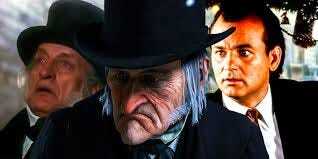
(Ebenezer Scrooge in A Christmas Carol, taking stock of his life through Christmases past, present and future.)
Cognitive studies argue that our human concept of time depends on metaphor. But spatial metaphors for the past and the future vary around the world. Is time a march of units in a sequential row, or a fluid movement around and between? Is the past behind us and the future ahead, or are they downhill and uphill? Turns out, that depends on the geography of where we were raised, and the culture we belong to.
This December, my sense of time and space is expansive, free-form. I’m creating my own spatial metaphors and I quite like it this way.
Museo della Macchina per Scrivere (The Typewriter Museum)
I suppose
if this were someone else’s story
they would have insisted on knowing
whatever is knowable – would have hurried
over the fields
to name it – the owl, I mean.
But it’s mine, this poem of the night,
and I just stood there, listening and holding out
my hands to the soft glitter
falling through the air. I love this world,
but not for its answers.
– An excerpt from Snowy Night, by Mary Oliver
One of the most unexpected pleasures of my recent novel research trip to Puglia, Italy was visiting the Museo della Macchina per Scrivere located in the gorgeous Palazzo Lodispoto in Trani. It houses 400 typewriters from the personal collection of Natale Pagano.
The museum is a mesmerizing walk through the history of ‘writing machines’ – from noiseless to portable, indexing to QWERTY keyboards (the one we all use now), utilitarian models to luxury.
But it’s also a cultural history tour. The development of the Nazi typewriter that had a SS key. The first Hebrew and Japanese language editions; braille keyboards as they developed. The different typewriters used by Ernest Hemingway and Ian Fleming (Goldfinger!), and war journalists the world over.

Then, there was the transparent PVC Swintec model developed for the US prison system so that inmates could hid nothing inside, no part could be reshaped as a weapon and guards could inspect with ease.

The big business of US prisons was a game changer for Swintec’s business model, which had languished after the rise of personal computers. A literally captured market – and not just hardware. Think of all those ribbons that need replaced. The correction tape. The printwheels.
This New Yorker article, “A Prisoner’s Only Writing Machine” is a fascinating look at the drive to create inside some of America’s worst prisons.
Kenneth Foster, Jr became a writer on death row, convicted of capital murder. He bought his first typewriter around 1999 and began to write letter after letter in an effort to stop his execution (he succeeded). Kept in solitary confinement, the typewriter was his only companion, his connection to the machine he called ‘baby’ visceral.
I have written with everything from pen, typewriter, marker, to my own blood. I have written on tables, floors, on walls when I only had a crack of light, in the dark, under blinding lights.
John J Lennon is serving life in Sing Sing for murder. He joined a prison writing program, which helped him process all he had done, and all that had been done to him. His cell has no chair, so he wrote sitting on a bucket until his back pain was too great. Now he sits on his bed with the typewriter on his lap. When it breaks (the model is unreliable), he writes long-hand. Writing has become so important, he got himself a typewriter tat.
I sit here, in the middle of this long night, typing away with a blankie, a cup of tea and my Apple laptop. The Christmas tree lights twinkle. I’m taking stock, reckoning with the year’s events, and with the privilege I experience in this life compared to so many in the world. But also feeling a kinship to all who put pen to paper, fingers to a keyboard, or voice to a story.
And, although dawn is yet to break, I feel the light forming inside. ☀️
Books & FilmHello, my name is Helen and I’ve become an audiobook addict. Especially when I travel. I find it impossible to sleep on planes, even in the very rare case I’m in the pointy front with its curved pods and flat beds. But I love to put in my AirPods, pull down my eye mask and be transported into another world.
I find fiction more conducive to the audio format; I need a strongly built world, and a distinctive narrative voice to drown out other stimuli. Among the books I listened to on my travels that I’d recommend: Blood Betrayal by Dr Ausma Zehanat Khan, Resurrection Walk by Michael Connelly, The Secret Hours by Mick Herron and The Sleeping Car Porter by Suzette Mayr (I was late getting to this 2022 title which won many awards).
I also partially listened to Dopamine Nation by Dr Anna Lembke, but have a harder time concentrating on non-fiction audiobooks. I made up for that this week, creating my own personal matching campaign in the bookstore. One book purchased for others, for me. I’m looking forward to digging into these next week:

Speaking of Mick Herron, the third season of the Apple TV adaption of his books, Slow Horses, is currently streaming. And it’s stunningly good. Brit Box unveiled the new season of Shetland, based originally on the Anne Cleves novels where a whole lot of people die in a very small place. But I’m not loving the writing in season eight.
I’ve also watched Reacher on Amazon Prime based on the Lee Child novels. Formulaic for sure, but mindless escape when you need it. I’m itching to go to the cinema over the holidays, as well. We have boxing day tickets for Ferrari, Michael Mann’s biopic of the Italian innovator.
Also on my list: the adaptation of The Colour Purple, George Clooney’s The Boys in the Boat, American Fiction, Bob Marley: One Love, and two movies I had London Film Festivals tickets for but didn’t get to attend: Steve McQueen’s 4.5hour documentary The Occupied City and Zone of Interest, winner of the Grand Prix award this year at Cannes.
Next newsletter (January 5th) I look at upcoming spring 2024 books and films that I’ve been tracking.
**
Bye for now. Thank you for joining me for this twenty-fifth edition of Letterbox . Wishing you a light-filled holiday.
December 8, 2023
Letterbox: Bookish & Filmish
I’m writing to you from the land of figgy pudding, carol concerts and endless streets strung with Christmas lights.
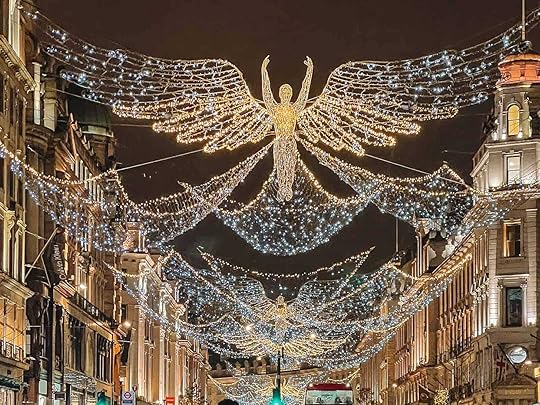
December in London – my favourite time of the year. The city is jammed; one taxi driver told me it was the busiest he’d ever seen it in thirty years of driving. I made the mistake of trying to walk Oxford Street between meetings, only to find myself sandwiched in a mosh pit of humans, moving forward one quarter-step at a time.
I missed you in October, when I was flatted by Covid and had to cancel my trip to the UK. And into November, busily researching a new novel in Southern Italy, and like everyone else, watching with horror the civilian deaths and displacements in Israel and Gaza as war rages on.
I’ve also been paying attention to the terrible situation in Sudan, where more than 10,000 people have been killed and 5 million displaced by an ethnic-based war between the army and the Arab paramilitary Rapid Support Forces, which grew out of the Janjaweed, brutal fighters I first researched years ago for their widespread use of rape as a war crime.
My new novel focuses on migration and the shifting EU political sands to the right. After a boat sinks off the Apulian coast having set out from Tunisia, politicians and international aid agencies flock to the area, each with their own conflicted agendas. At the heart of the story lies a mystery where the political and personal collide, of a long-held secret and a blood debt that must be paid.
The G7 takes place in Puglia, Italy next June and that partially forms the backdrop of my novel. For a decade, I belonged to a G7/G20 research group based at the University of Toronto, and attended the global summits, which were quite the education. So, I’ve been reading deeply about migration patterns, including from Sub-Saharan and North Africa, as well as European politics.
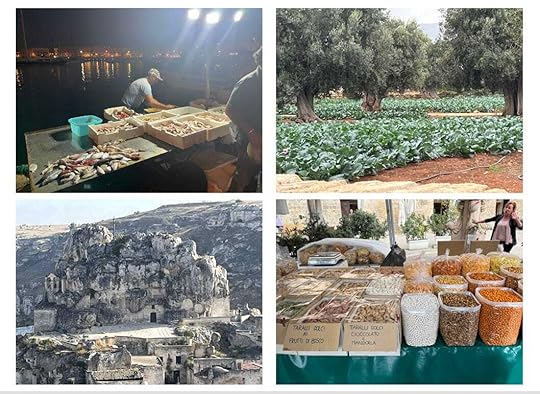
Puglia is often described as the heel of Italy’s boot, a 7,500 square mile area in the southeast of the country, bordered by the Adriatic and Ionian Seas. It’s a land of ports where fishermen self their wares at day’s end. Of rock churches and olive groves (40% of Italian olive oil is Apulian). And of delicious food without pretension – fresh vegetables, just-caught seafood, orecchiette with broccolini, pureed chickpeas with chicory, and the best bread ever.

Southern Italy has always been the poorest region in the country, one that voted overwhelmingly against the 1861 unification of Italy. The first large waves of emigration started shortly thereafter; it’s estimated that 80% of the Italian communities in North America come from the south.
Puglia was traditionally called the ‘doorway to the Middle East and the Orient.’ It has seen massive transformations over millennium due to its strategic shipping position, as well as being the departure point for pilgrims headed to the Holy Land.
First populated in the Palaeolithic age by Italic peoples and colonized by the Greeks in 8th century BC, it was subsequently conquered in turn by the Byzantines, Saracens, Normans, Austrians, Spanish, French, Bourbons, Sicilians, and then through forced unification in a country where power and wealth resided in the north.
Conquer, surrender, resistance and change – essentially the history of the world and mankind.
Throughout Puglia, the accumulated footprint of different cultures is obvious. Churches destroyed and rebuilt in new styles on the same site. Food reimagined with different spices and ingredients. Constantly changing boundaries and names. Intercultural and interfaith marriages.

(Many churches have glass floors to display pieces of ancient buildings underneath.)
Trani was the capital of Puglia until the Napoleonic age (when it was moved to Bari just south on the Adriatic coast). It was home to southern Italy’s largest Jewish community, with a Jewish quarter adjacent to the port. They were actively involved in shipping and commercial life, helping create the world’s first Maritime laws (signed in Trani, 1063) which are still valid around the world today.
By the 15th century, Tranese Jews faced serious persecution under the Spanish who had sought to ‘cleanse’ Spain of both Jews and Muslims, then carried on their mission in Italy. In a whirlwind of pogroms that followed, most Jews were forced to convert to Christianity or expelled, leaving only a small community intact today.

Of the four original medieval synagogues, two were destroyed; another, Sant’Anna, was converted to a church, then eventually made into a historical museum. Scolanova, the last shul, remains in use although by the time I arrived in mid-October, it had been defaced and was locked for security reasons.
I thought back to Puglia recently as I read the latest Vital Signs Report from the Toronto Foundation. Toronto is a city of ever more lonely people. Lengthy covid lock-downs took their toll. The report says we’re interacting less with others; volunteering and donating less; and reporting increased depression and anxiety.
Not surprising, but disturbing nonetheless.
One of the most charming things I found about Puglia was the communal aspects, including “La passaggeiata,” the evening ritual between 6-8pm, when whole families promenade through the town, greeting each other and enjoying time together.
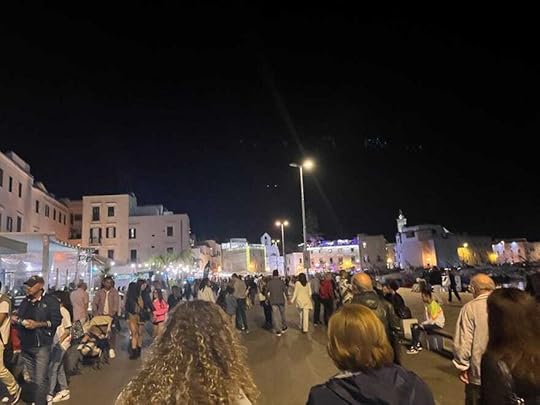
Those who can’t easily walk prop themselves up on chairs outside their buildings or on benches. Older women go to church in the early evening to get the local gossip while their husbands group together in town for a gossip of their own.
This is of course easier in smaller town than large cities. And not all of us have a mild climate. But there was something fun about the deliberate socialization at the beginning of the pandemic – the zoom drinks, the gathering outside around firepits, the walk dates with girlfriends – that fell away as the world opened up. Yet, our old social patterns haven’t fully returned, leaving a hole.
Nothing in life is achieved without deliberate effort. Social justice. Elimination of poverty. The slaying of loneliness. Or peace.
Last weekend, I sat in St Martin’s in the Field, Trafalgar Square, for their annual Carols by Candlelight concert. It was interspersed with readings, including I Heard The Bells on Christmas Day by H.W. Longfellow. The poem’s narrator Henry tells of a nation and family divided by civil war. He’s silenced by grief, despairing “for hate is strong // and mocks the song // of peace on earth, good will to men.”
As that line was read, the voice of the young woman was drowned out by a cacophony of police sirens racing past, their blue lights flashing bright through the stained-glass windows into the darkened church. Hundreds of heads swivelled, I’m sure thinking like I did, of the irony of the words at this moment in time.
The reader carried on, her voice reignited by a poem which finds hope in the end.
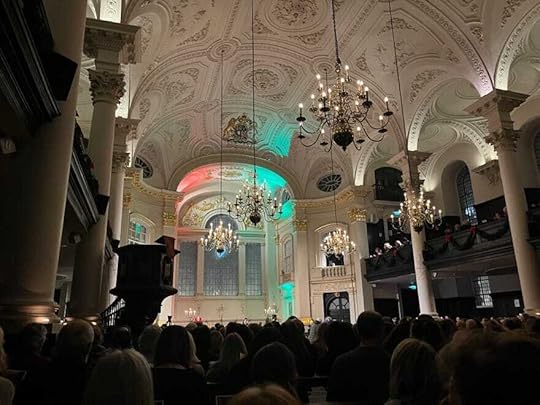
It’s a dark time right now. Watching the news feels like a body blow, and our frustration and hopelessness at the violence and suffering too often spills over into conflicts with one another at home. None of us have a singular truth. All of us engage in different ways. I hope we can treat each other with compassion as we seek greater security for all.
Filmic Italy.While in Puglia, I based myself for a few days in picturesque Polignano a Mare, with its famous beach, Cala Monachile.
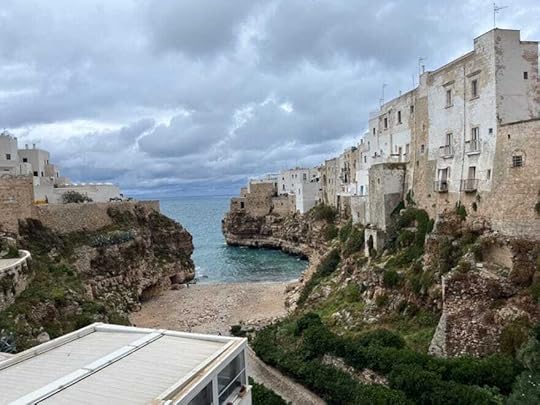
Polignano is entirely charming, with amazing restaurants, friendly locals and of course gorgeous beaches. (Warm enough to swim at the end of October. . .) Turns out that a decade ago, Polignano was just one of many lovely towns along that mid-Apulian coast between Bari and Brindisi, not yet the tourist mecca it became.
What shifted its fate? An episode of US soap The Bold and The Beautiful, who filmed the long-awaited wedding between Hope and Liam in 2012 on the now famous bridge. The location shoot was designed to reward faithful Italian viewers (11% of the show’s audience), and the travelogue went viral. Voila, pics of Polignano were flooding our Instagram accounts.
All of Italy is of course a film set. The list of movies who have shot there is long. Actors love it, too. Justin Timberlake and Jessica Biel married at the very posh Borgo Ignazia in Puglia; also a favourite of Madonna, the Beckhams, and many celebrities. British actress Helen Mirren is a long-time Puglia resident, as is reportedly Meryl Streep, Mickey Rourke, Francis Ford Coppola, among others.
Much more to say about Italy, and lots of new film and book recommendations. But that will need to wait until the next newsletter, which will arrive more promptly than this one!
Bye for now. Thank you for joining me for this twenty-fourth edition of Letterbox .
September 18, 2023
Letterbox: Bookish & Filmish
Happy September, friends! How did we get here already?
It’s Saturday, and I’m writing this at the cottage, that very Canadian of experiences, having come from a mid-afternoon kayak in the hot sun, followed by a plunge in Georgian Bay water already cooling enough to be refreshing. Tonight’s temperature promises to be an unseasonably chilly 9°C/45°F; I’m thinking a blankie, roaring fire and small scotch will be required.
Bliss, in other words.
August usually finds me chasing my cultural fix in Edinburgh, but instead this year I wandered a 165-km craggy, wildly beautiful Newfoundland peninsula dotted with fishing villages and outports, collecting stamps on my Bonavista Biennale passport as I absorbed thought-provoking and sometimes startling contemporary art by Indigenous, Canadian and global artists.

There’s something so intrinsically satisfying about encountering art outdoors or in small-town festivals like Stratford, or Hay, or Tanglewood.
No jammed-packed subways or clogged roads to deliver you (now in a foul mood) to a theatrical venue serving over-priced wine of dubious quality that you can’t take to your squished seat. (At least not in Toronto, unlike London where you can pretty much eat a three-course meal during the play.)
Like many cultural festivals, Bonavista’s was launched six years ago with a mix of cultural, tourism, and marketing goals in mind. Until this year, I’d never heard of it.
The grand-dame of art biennales is of course Venice. It was started in 1895, at a time when the city had decreased in prominence due to the demise of the European “Grand Tour” – the custom where upper-class young men engaged in a lengthy educational rite of passage around Europe, in which Venice played a starring destination role.
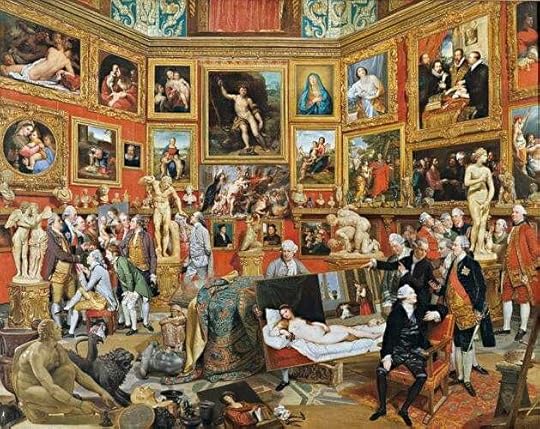
But, by the late-18th century enthusiasm for classical culture had waned; meanwhile, accessible rail and steamship travel expanded horizons. What was a city to do?
If you were Venice City Council, build a world fair focussed on contemporary art, and in doing so justify a much-needed regeneration of a dissolute part of the city while aiming to regain your place on the global cultural map.
I’ve always loved site-specific art and have produced many such installations over the years. The goal is to curate work whose core artistic theme/question inter-relates to the location in which it’s presented. And, in cases were multiple pieces of art are displayed, to ensure they engage in a dialogue with each other.
The theme of this year’s Bonavista Biennale was Host. To welcome a guest, with generosity as well as expectation of reciprocity. The curated pieces explored the meeting point between people, perspectives, life forms or locations, primarily the environment and Indigenous-settler relations.
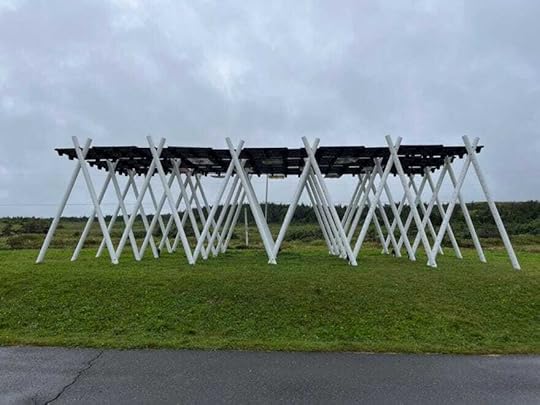
Before August, I knew the Bonavista Peninsula mainly as a song lyric in I’se the B’y by Great Big Sea. But now I feel more intimately connected to it, having spent time in many of its small towns and rural locations as I searched for installations in closed slate mines, or community halls or on the outside wall of variety stores.
Along the way, I chatted with locals, ate in owner-operated restaurants, bought folk art in cafés and thought about connections to nature and one another. What is mutually beneficial and what is parasitic? Where does resilience come from?
One hundred and thirty years ago, the Venice Biennale aimed to spark a conversation about contemporary art that was not happening in the major galleries of the time. That goal has been eclipsed in the century since, as galleries expanded their focus and contemporary art exhibitions popped up everywhere.
One thing I found interesting about the Bonavista Biennale was the interplay it set up right off the bat, with the first installation by filmmaker and multi-disciplinary artist Glen Gear, whose work I had seen the previous day in The Rooms in St. John’s. The two different installations were considered to be a portal to each other, with the artistic theme explored differently, but inter-connectedly, in both locations.
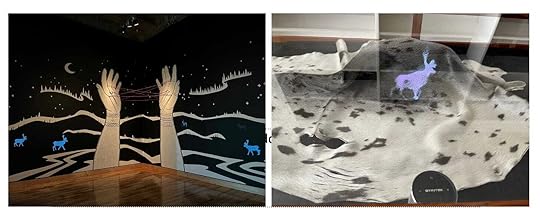
I experienced only a fraction of all that Newfoundland has to offer. St John’s is the most Irish city I’ve been in that’s not actually in Ireland, and a shockingly good time. (I even managed to get myself invited to an infamous ‘kitchen party.’)
The whales diving around our boat out at sea; a fantastic play about belonging and community at Rising Tide Theatre in quaint Trinity; the lap of affordable luxury at Fishers Loft in Port Rexton. I can hardly wait to go back. ❤️
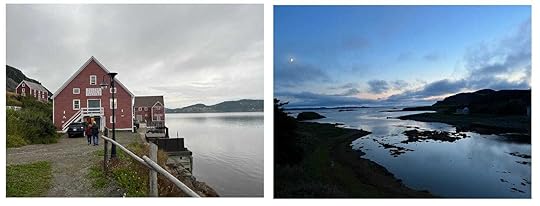 Books & Films & Festivals.
Books & Films & Festivals.The Toronto International Festival of Authors runs September 21 to October 1, featuring an amazing line up of Canadian and international authors. I’ll be there this Saturday (Sept 23) and Sunday (Sept 24) all day as I’m producing 5 events. Come hang out with me if you’re in Toronto!
**
One US festival I’ve always wanted to attend is the Miami Book Fair. It’s a festival writers really fight to get programmed into, since it’s November and Miami (hello, sunshine) AND an outdoor street party kind of vibe. If you need a sun holiday to keep the SAD away, check out the great lineup. It seems worth planning a trip around, which one of these years I’ll manage to do!
**
It’s a busy month, so I ended up seeing only a few films at Toronto International Film Festival this year. Highlights included:
Dumb Money, a David (small-time investors) vs Goliath (Wall Street Hedge Fund types) tale, based on the crazy true story of the Gamestop (a stock) and Robinhood (a trading platform). It stars Pete Davidson, Paul Dano, America Ferrera and Seth Rogen. (I walked the red carpet for this film, which was a surreal experience!)
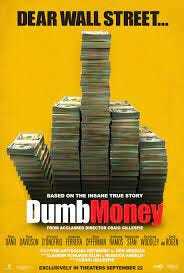
The opening night audience LOVED when producers Rebecca Angelo and Lauren Schuker Blum made the analogy between rich hedgies gaming the system and rich Hollywood studios doing the same to screw over writers. Hedge fund billionaire Ken Griffin, depicted in the film, is purported to be threatening Sony with a lawsuit.
I also really enjoyed Stamped from the Beginning, which explores the history of anti-Black ideas in a way that helps us grapple with present-day racism. Oscar-winning director Roger Ross Williams does a stellar job of adapting the 600-page book of the same name by Dr Ibram X Kendi into an accessible and engrossing film.

The Q&A afterward was thought-provoking, both in terms of discussing anti-racism and also the creative choices made. Producer Mara Brock Akil talked about the needs to (re)craft pitches in a way the person on the other side of the table can absorb, in order to get a project green-lit. A lesson for writers and producers alike.
**
I’ve come to love audiobooks, listening to them as I walk, or cook, or chill out. Apparently many of you must, too: as of 2022, audiobook sales were $1.8 billion in the US and $5.38 billion globally. (Difficult to find Canadian-only figures).
What I’m currently listening to: The Detective Up Late by Adrian McKinty, the 7th and final book in his Belfast-based series. McKinty has an ability with character and voice that is amongst the very best of any contemporary writer. Reading him is like a masterclass in craft.
Substack.Substack is the platform through which I deliver you Letterbox, but I’ve been discovering what a strong community of writers and readers are there as well.
Anyone can sign up for Substack. You can access via a web browser on your computer or by downloading their mobile app. I use the desktop version to write but I read on my phone. Substack continues to build out their community features to assist writers to connect with readers and each other. There’s a Chat function and also Notes, a twitter-like scroll of commentary and posts, but none of it negative.
Through Notes, I’ve subscribed (either free or paid) to twenty-five publications so far. Everything from The Camont Journals with Kate Hill, a chef who writes from her 300-year-old farmhouse in Gascony, and who is launching this week a serialized culinary memoir. To Pine Street Publicity with tips on book publishing. To The Books That Made Us about, well, books.
My full reading list: helenwalsh.substack.com. I love to cook and to read, so my list is heavily weighted to cookery writers, travel writers, book discussions and publishing industry folks (agents, publicists, etc). And I’m just diving in to learn about serialized novels on Substack, which I think provides an interesting opportunity for writers.
Substack is free for writers with who have free newsletters; for paid newsletters they take a tiny percentage. Substack, like writers, needs revenue to survive, so they encourage writers to either produce a paid version of their newsletter, or ask for reader-support through low monthly amounts ($5).
I was surprised when out of the blue I received a reader contribution, then a second. I realized that Substack had introduced buttons into Letterbox that enables readers to contribute. Letterbox: Bookish & Filmish will always remain free, although I am introducing special add-on features to thank those readers who support my writing. And sending endless good karma their way 😉
Bye for now. Thank you for joining me for this twenty-third edition of Letterbox .
July 26, 2023
Letterbox: Bookish & Filmish
A few years ago, I started work on a story idea about a woman who curates private libraries for clients. I’d recently read an article in the FT and it piqued my curiosity.
A library is your story on a shelf. – Nicky Dunne, creator of bespoke private libraries.
Heywood Hill is not your average bookshop. Opened in 1936, it was run during the later years of WWII by Lady Anne Gathome-Hardy and novelist Nancy Mitford, of the infamous Mitford sisters. Nancy was the anti-fascist sibling, who caused considerable family tension when she published a satire decrying Sir Oswald Mosley and the British Union of Fascists, of which two of her sisters were sympathizers.
Letterbox: Bookish & Filmish is a reader-supported publication. To receive new posts and support my work, consider becoming a free or paid subscriber.
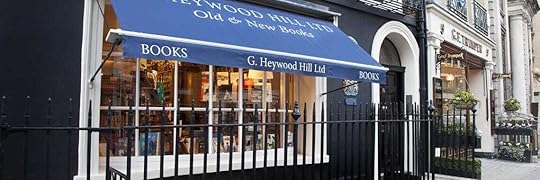
The store – reportedly Queen Elizabeth’s favourite bookshop – later sold to Mitford’s brother-in-law, Andrew Cavendish, 11th Duke of Devonshire who passed it on to his son Peregrine. Nicky Dunne, the current manager, is Peregrine’s son-in-law.
I like to visit antiquarian bookshops in London, sometimes purchasing a minor title but more often just browsing. Feasting my eyes on a first of Karl Marx. Rare original photos of Sado Island by artist Iwamiya Takeji. An original of the 1771 infamous Tea Act that catalyzed the Boston Tea Party and ultimately American Independence.
In short, the world’s history, neatly lined up on the shelf like foot soldiers or tucked away behind glass.
I love those spaces. Silent, except for footsteps on creaky wooden floors or the odd throat clearing. Seriously knowledgeable staff working away at tables or desks topped with leather to better protect the books. Such delicious, tactile pleasure.
But, until I read that FT article, I’d never fully appreciated the role that antiquarian shops have in curating entire libraries for individuals or organizations. Whether 27,000 books about cricket, 2,000 books to help diplomats understand for the London embassy of an Arab government or a few hundred for a study wall in a Californian house, these private librarians work with clients to determine needs, source the books however rare and even consult on the look/feel/function of the physical rooms.
 Curated Book Boxes
Curated Book BoxesA library doesn’t have to be ostentatious to contain beautiful books. And people’s desire to collect beautiful objects is one that Illumicrate, a UK-based subscription box for book lovers now expanded into the US/Canada, has fully leveraged.
Founded in 2015 by book-blogger Daphne Tonge in her London living room, with a focus on Young Adult titles, Illumicrate has quickly grown into a very successful company with tens of thousands of subscribers and a WAITLIST to become one.
Illumicrate’s book box is curated and ‘up-speced’ to make the monthly title a collectible. They commission a new cover, add sprayed edges and slip-cases, and surround it with book-inspired merchandise if the subscriber chooses.

Illumicrate expanded to include all book genres, although their main focus is SFF (Science Fiction/Fantasy), romance, and horror. They work with publishing houses whom they pay to do the work of custom design and printing. But it’s Ms Tonge’s plan to start her own press, through which she’ll search out successful self-published books to reprint and include in the curated boxes.
Perhaps an adaptable business model for indie publishers, either on their own or in a collective. What Ms Tonge has proven is that books can have sizzle if marketed with innovation and care. The re/opening of Barnes & Nobles stores with early morning lineups around the block, or this Esquire article on the appeal of book merch, also suggest readers appreciate some pizzazz.
London LibraryAnd speaking of cherished books. . .last year I joined the London Library. The private library was established in 1841 when there were no lending libraries in London and before state-funded libraries were established.
An organizing committee raised the funds necessary for launch by selling founding memberships to Charles Dickens, John Stuart Mill, Harriet Martineau, future Prime Minister Lord John Russell and Dickens’ publishers, among others.
A few months later, Charles Darwin and William Thackeray joined; then, over the years, Bram Stoker, Virginia Woolf, Angela Carter, Daphne du Maurier, Stanley Kubrick, Ian Fleming, Kazuo Ishiguro and AS Byatt.

Almost two centuries later, the London Library is still going strong, having survived some tough times with a little help from friends like E.M. Forster and despite the Nazis, who bombed the building in 1944, destroying more than 16,000 books.
7500 members make up an active community, housed in a beautiful building in St James Square, home to more than 1,000,000 books. It’s a delightful place to read, research and write. There’s also an extensive resource of online periodicals and databases. (They have lower member dues for those who live outside London.)
The Library has seen many Presidents from T.S. Elliott to the current incumbent – actress Helena Bonham Carter, a member since she was 21.

This very funny interview features Bonham-Carter and Simon Callow, himself a longtime member who uses the library collections to research his acting roles.
The library is frequently requested as a film/tv venue. Production crews go to heroic ends to shoot there as special care is needed for the collections and they can shoot only overnight so as to not interrupt the member access hours.
Even if I had the means to afford a private librarian from Heywood Hill or Maggs Brothers to curate me an extensive collection, I think I’d still rather sit in the Reading Room of the London Library, scribbling away, feeling the ghostly presence of Arthur Conan Doyle and Joseph Conrad and Antonia Fraser sitting right there alongside me.
Morgan LibraryI have always imagined that paradise will be a kind of library. – Jorge Luis Borges
One of my first stops on any visit to NYC is always The Morgan, a museum and independent research library at Madison & 36th. As early as 1890, J.P. Morgan had begun to assemble a collection of illuminated, literary, and historical manuscripts, early printed books, and old master drawings and prints for his private use.

Belle da Costa Greene was his personal librarian. After Morgan’s death, the library was gifted to NYC, and she became its first director, remaining until retirement in 1948. She was Black, but quietly passed as white, and was famous in the international world of fine art and rare books of the mid-20th century. The novel, The Personal Librarian, tells a fictionalized version of her fascinating story.
Festivals.I’m not heading to Edinburgh this August for the festivals as normal, instead going on holiday to the Miramachi, Nova Scotia’s South Shore and, for the first time, Newfoundland. And I have no intention of kissing the cod!

However, in early October, I’ll attend the Times Cheltenham Literary Festival. Cheltenham is a spa town on the edge of the Cotswolds, which holds annual festivals of jazz, music and science in addition to the world’s oldest literary festival.
But before that, I’m excited for the Toronto International Film Festival (Sept 7-17/23) whose full program drops August 15th. What actors can walk the red carpet will depend on the state of the SAG-AFTRA strike.
Also in September: the Toronto International Festival of Authors (Sept 21-Oct 1/23. Program drops August 21st but I’m producing some events in partnership with them, so I have hints of the full lineup. Hold the dates, because it’s going to be great.
Books + Industry.The big publishers are busy bloodletting many of their most experienced editors in a bid for reduced expenses, the Canadian government still refuses to keep their word to fix the broken copyright system, and Indigo is in a death cycle.
But let’s focus on happy publishing news. Delighted to see Leigh Nash, a publisher for whom I have enormous respect, launch a brand-new publishing house, Assembly Press. New indie bookshops are opening up in Canada and the US; meanwhile in the UK, indie presses are ascendent, with many writers including Bret Easton Ellis and Sheila Heti jumping ship from the Big 5.
What I’m Currently Reading.In our risk-averse climate, a lot of what is exciting, original and untested is being published by independent publishers. – Anna Webber, literary agent.

Gull Island by Anna Porter is some seriously scary stuff, especially reading it while alone on a Georgian Bay island. . . And since I’m in the mood for chills, I’m also reading the mystery novel Lost and Found, by Dianne Scott, whom I’ll be hosting on a literary walking tour of Yorkville in Toronto 10 August. Join us!
Bye for now. Thank you for joining me for this twenty-second regular edition of Letterbox . See you next month.
Letterbox: Bookish & Filmish is a reader-supported publication. To receive new posts and support my work, consider becoming a free or paid subscriber.
June 19, 2023
Letterbox: Bookish & Filmish
I’ve just returned from the Tribeca Film Festival in New York City. It was literally the Big Smoke: at times the air was orange and unbreathable due to forest fires burning in Québec. As one taxi driver said to me, it brought back eerie memories of the last time the air had been that bad: September 11th. And I agreed.

The Tribeca Film Festival was founded by Robert DeNiro, his long-term producing partner Jane Rosenthal and her then husband Craig Hatkoff in late 2001 to spur economic revitalization after the terrorist attacks.
I lived in Tribeca at the time but moved to Brooklyn when the area south of Chambers Street became uninhabitable after 9/11. I’ll never forget the ashy particles that fell from the sky in the days/weeks that followed as the fires burned.
New York isn’t an easy place to live. You constantly need to fight for space – on the sidewalk, in line at the grocery stores, on transit. It’s expensive. And so loud, everywhere, all the time. But the quid pro quo? A city that feels alive in every square inch, and a pulsating energy that drives you forward (until it flattens you).
New York’s complexities and contradictions, its riches and its poverty, engages the imagination of artists and ordinary citizens alike. “You looking at me?” it asks, in a pugilistic tone. But of course the place and its people already know the answer. The world looks at New York, consuming its images in film, books, video games, photographs and more.
It was great to stay in Chelsea for the first time and walk the streets from Sixth Avenue to the east and Hudson River to the west. 14th at the south end where it meets the West Village. The soon-to-be revitalized Penn Station at West 34th, Chelsea’s northern demarcation along with Hell’s Kitchen and its history as an Irish slum controlled by organized crime (now of course gentrified, with sizeable Irish, Hispanic and LGBTQ communities).
Chelsea has long been associated with the arts. There’s the infamous Chelsea Hotel of course, the largest and longest-lived artists’ community in the history of the world, made famous by Leonard Cohen’s song, Allen Ginsberg’s poetry and the documentary Dreaming Walls: Inside the Chelsea Hotel – among many others.

There are hundreds of art galleries in those twenty blocks, and I slipped into Maison Ten late one night to watch an artist install a new work and have a glass of wine. I also visited, for the first time, the sprawling Chelsea Piers on the Hudson River, originally a passenger ship terminal revitalized as a waterfront sports village with film/tv production facilities and a marina.
I was there to attend a festival pre-party for horror film Somewhere Quiet on a yacht complete with film swag bags to take home.

Let’s just say – a little outside my normal snack bracket. 😎
Tribeca Film Festival is a mecca for genre fans, and this year horror films made a big splash. On the awards side, Cypher, a tale about the dark side of celebrity and conspiracy theory, won the US narrative feature award while A Strange Path, which follows a young filmmaker’s returns to Brazil during the pandemic to reconnect with his father, won the international competition.
The Graduates, a searing debut about the aftermath of a mass school shooting in Utah that left me speechless, won best narrative cinematography.
In addition to film screenings, Tribeca Film Festival produces a storyteller’s forum of on-stage interviews. I was able to catch one: David Letterman and John Mellencamp. I haven’t seen Letterman’s Netflix show, My Next Guest Needs No Introduction, but it was clear the sold-out audience was there for him as much as Mellencamp.
Their talk about life and addiction and anxiety channeled into art was funny and honest and genial, these two men from Indiana at a stage in life where they have nothing left to prove but are still rocking the political and social commentary.
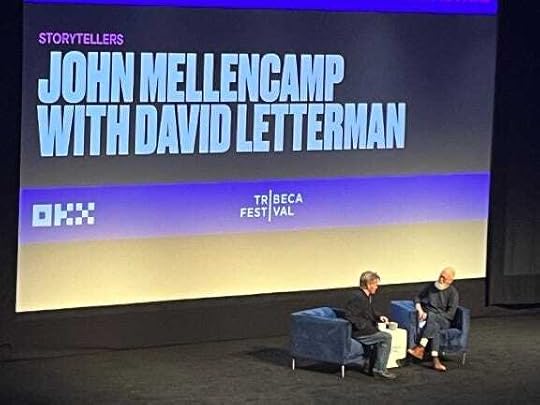
Books.Don’t look back, there’s nothing back there worth keeping. – John Mellencamp.
I’m currently listening to the audio book of Deepti Kapoor’s new thriller, Age of Vice, set primarily in New Delhi. I’ve never visited but imagine the city to have the same kind of frenetic energy as New York.
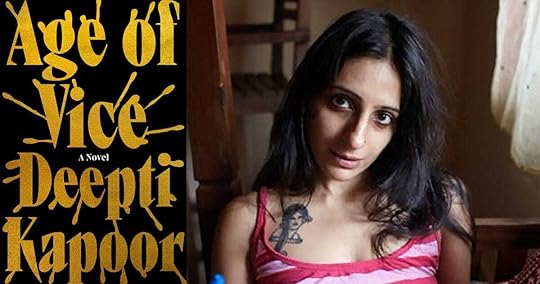
Age of Vice is long; over 500 pages in print, almost 20 hours in audio format. I listened to the first 5 hours in a blind rush – it was that good – but then my attention began to lag. The novel’s effortlessly cinematic tone wears a little thin and the character turns become less believable. But still, it stands above, and I look forward to finishing. Age of Vice has already been optioned for television by FX.
I’m also listening to the audiobook version of In Extremis, about famed foreign correspondent Marie Colvin, who was assassinated by the Syrian government in 2012. The book is excellent. My daily step count has nearly doubled as I take walk breaks so I can continue to listen, inspired by the story of a strong, brave and intelligent woman who went out in the world to bear witness. She wrote what she saw despite criticism, including about the American-led invasion of Iraq after 9/11.

Listening to this book confirms my preference for researched biography over memoir. The journalist who wrote it, Lindsey Hilsum, had been good friends with Marie Colvin; they were the ‘Thelma and Louise’ of the press corps. But the book never descends to hagiography.
Hilsum did exhaustive research: Colvin’s articles, emails, faxes, interviews with Colvin by other journalists, books by other journalists, her own interviews with 100+ people who knew or met Colvin, and, most importantly, more than 300 journals (personal diaries and reporting notes) Colvin kept from age thirteen until a month before she was killed.
Hilsum reveals an honest and complicated portrait of a woman who lived at the edge in both her personal and professional lives, as well as the trade-offs involved in war journalism. I don't think any individual would be capable of producing that about themselves. As humans, we’re rarely the best expert on ourselves and objectivity, gained through intersecting points of view, gives greater insight.
Next up on my to-be-read pile: Arrested Song, by Irene Karafilly, an historical novel set in the Greek village of Molyvos, on the island of Lesvos, which is a place I love. And political thriller Last Election, by Stephen Marche and former democratic presidential hopeful Andrew Yang, that is getting great reviews.
Festivals.Recently, I had the pleasure of interviewing poet, playwright and now novelist Jonathan Garfinkel on his new book, In A Land Without Dogs, The Cats Learn to Bark.
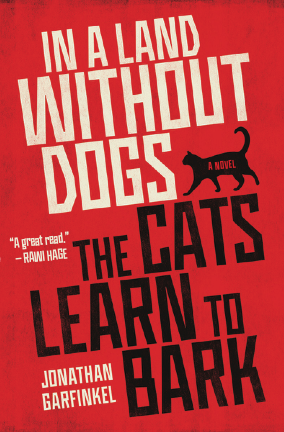
I loved this novel. It’s ideas-driven, with strikingly original characters, a propulsive plot, dark humour, whole-hearted empathy and love, idealism yet fatalism, and joie de vivre to burn. There are Chechen fighters, Russian KBG, CIA democracy agents, Russian writers, real-life politicians, even an appearance by Noam Chomsky – my kind of writing!
The action spans from 1975 to 2003, exploring the legacy of the Soviet Union. It’s set mostly in the Republic of Georgia, a part of the world where longing on a large scale makes history, and protest is as essential as breath. ‘Where Amirani challenged God and Prometheus stole fire from Zeus and Medea slayed her children. This mythical landscape, born of revolution.’
The novel is a love song to revolution, and to the passion and intensity of people whose lives are rooted in it – yet a clear-headed look at revolutions’ futility and ugly aftermath. It explores whether monsters are born evil or shaped through environment. Asks if nationalism is always destructive and whether politics and performance art are the same kind of spectacle. If the curation of truth a lie. And perhaps most fundamentally, what are we to do about the past?
It's also prescient. Garfinkel’s novel was finished before Russia’s invasion of Ukraine. But for the countries and peoples who’ve long suffered from Russia aggression, it’s not a surprise. The Russian imperial project is far from played out. As one character says, “they’re never going away.”
The interview was part of MotiveTO, the crime & mystery festival of the Toronto International Festival of Authors that took place in early June. (Their main festival runs 21 September-1 October 2023.)
A second event I moderated involved two serious but absorbing non-fiction titles:
Tamara Cherry’s The Trauma Beat, about how reporters cover stories of violent crime and the lasting traumatic impact that has on survivors/families as well as journalists. Cherry uses real-life examples from Canada and the US to illustrate her points which was at once both gripping and nauseating.
Kent Roach’s Wrongful Convictions, about those instances, more numerous than we want to admit, where the criminal justice system convicts the wrong person for a crime.
Industry.I’ll keep this section short, as I just published three special editions of Letterbox about the publishing industry. But a few short tidbits.
***
The endless saga of who will buy Simon & Schuster continues, in the wake of Penguin Random House’s blocked takeover. HarperCollins and private venture capital firm KKR are the two main suitors. Lots of ink has been spilled on the pros/cons of either scenario; Ken Whyte’s ShuSH newsletter here on Substack has a great summary of the takeover bids, as well as the state of independent publishing in Canada.
**
This Lit Mag News piece details how aspiring writers are soaked for money. From contest entry fees to marketing opportunities to MFA writing programs, how much someone can afford to pay influences the opportunities they have.
Profiting within an industry is one thing (i.e. using money to create positive change). Profiting off an industry is a more pernicious monster that we should learn to recognize and perhaps even overcome.
The whole phenomena about emerging writers and the almost fetishistic atmosphere that’s developed around the hashtag #amquerying is unsettling. Running a literary mentoring organization, I often think about the best path forward for new writers.
#amquerying, in the most positive light, can provide peer-to-peer support for writers, and constructive advice from agents. But too often the tone gets nasty, and the fervour reinforces a message that securing an agent is the end game when that’s just one step toward a publishing deal and a non-guaranteed one at that. It also implies there’s a magic elixir involved, which helps justifies fee-for-service courses and services provided by some literary agencies.
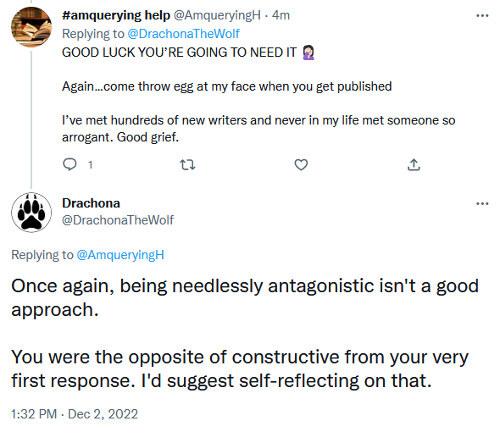
This all knocked around my mind as I Grace Lavery’s article, You Already Write How You Write, Just Give In, in LitHub:
A few final things: one, just do your work. Most drama associated with people who call themselves “writers” or who are identified as such by others, is a form of procrastination, which is to say, resistance. It doesn’t really matter. If you can’t write, read. If you can’t read, do something else. Don’t force it—it might not come, but that’s fine too. Not everything needs to be written and not everyone needs to write.
***
Bye for now. Thank you for joining me for this twentieth-first regular edition of Letterbox . See you next month.
May 15, 2023
Letterbox: Bookish & Filmish
I’m writing this from the Newport, Rhode Island where I am having a 4-day long weekend. It’s The Ocean Race weekend, the only North American stop on an around the world sailing race (32,000 nautical mile or 60,000 km), that is amongst the world’s toughest and craziest team sports.
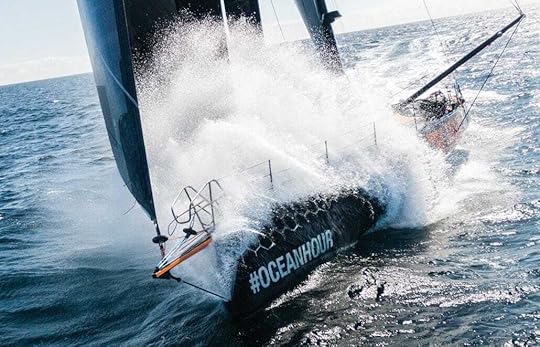
The crew race day and night for more than twenty days at a time on some legs, slammed by the wind and waves and extreme conditions that can fluctuate from -5 to +40 degrees Celsius, hands raw from effort, skin burnt to a crisp. They subsist on freeze-dried food, sleeping when they can in cramped quarters, wearing the same smelly clothes for months on end.
The sailboats have onboard laboratories measuring samples of the ocean’s health and transmitting it almost simultaneously to scientists around the world.

11th Hour Racing, the hometown team, thrilled the Newport community on May 10th by winning the fourth leg which had departed from Itajaí, Brazil.
The Ocean Race takes remarkable endurance (+ skill + decades of training + sponsorships) and a determination to keep heading into the prevailing head winds, no matter how fierce.
“There is no question these are boat-breaking conditions. . .we are under some pressure to get out of the path of this low that is only going to intensify. And the only way to get out of its path is to run… headfirst into a growing and confused sea state, typical of the northeast-flowing Gulf Stream. We’re slamming straight into breaking waves at 26 knots. You are never more alert than in times like these. It’s violent seated, violent standing, violent on your knees!”
We all face various endurance tests in our life – some physical, some emotional, those we choose and those life throws at us. Whether we ride the wave or sink below it is a complicated dance of resiliency, privilege, externalities and grit.
For writers, the headwinds are frequent. Internal doubts, external criticism, an industry that relies on your output but often treats writers paternalistically or with disregard.
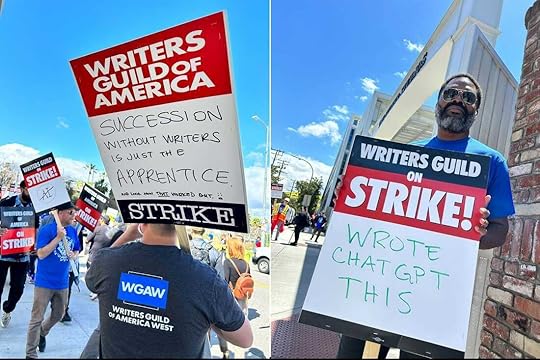
A desire for greater transparency and control (creative, financial and/or logistical), along with industry attitudes such as these, are leading more and more writers to choose indie/self-publishing. Not because they can’t get traditionally published (aka through a publishing house), but because they don’t to.
When I was publisher of a book review magazine, we refused to consider self-published books for review. Everyone around the editorial table was in agreement. It was hard enough to sort through thousands of books a year; we thought the editorial process undertaken by publishing houses asserted a kind of quality control. Most review outlets still follow the same rule of thumb.
Now, I’m not so sure. Concepts of excellence really are subjective. Tech and generational change are driving innovations in publishing. Experienced writers are choosing indie publishing, thus changing the overall creative output. Barriers to legitimacy (reviews, bookstore distribution, inclusion in festivals) are falling.
And if social media is now more important to a book’s success than traditional reviews, and digital-first readers don’t differentiate between indie and traditionally published authors, then the lines are blurry.
A truism often repeated at the London Book Fair was that It’s easier than ever to get published but more difficult than ever to break into traditional industry.
Indie authors were interwoven as speakers throughout the LBF seminar program. They argued that ultimately the choice for writers boils down to issues of control:
👉Of copyright/intellectual property. Many indie authors sub-license various rights, particularly for translations, and the most successful of which are also distributed through bookstores. They argue it never makes the best economic sense for any author to license all rights to one publisher.
👉Of the timelines (want to publish your book quicker than 18-24 months?).
👉Of the transparency of information (imagine being able to see your sales daily, rather than once or twice a year when you get royalty statements).
👉Of the cashflow (no waiting for royalty cheques).
👉Of the creative. The successful indie writers all hire substantive editors, copyeditors, proof-readers and book designers. But they have control over all facets including cover design, a particularly sensitive topic. (See below.)
👉Of audience. The most successful indie authors aggressively build their own email lists using ‘reader magnets’ (free ancillary writing such as extra chapters, short stories, etc) and newsletters. Then they sell their books direct to this readership.
But indie road is not for everyone. You must be willing to see your writing as a career and take responsibility for it.
(That seems obvious but there’s a taboo in publishing against openly discussing money as if it somehow devalues the creative impulse. The lack of transparency about financials certainly isn’t to the benefit of most writers. . .)
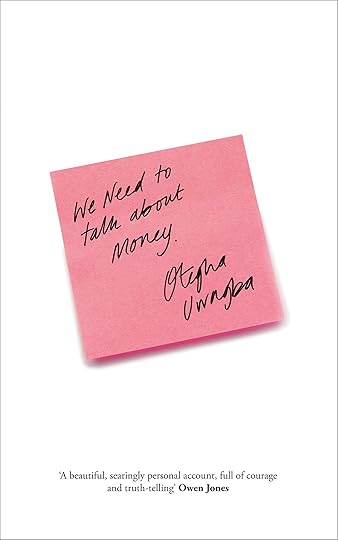
Indie authors argue that since the size of the social media platform a writer builds is a major determining factor in getting signed by a traditional publisher (confirmed by agents), and since an author will be expected to hire their own publicity help anyhow, why shouldn’t they keep the financial upside for themselves?
But one does need to be willing to invest money to get started, as the experienced indie authors all recommend outsourcing services. They note that innovations in tech have decreased the costs of production, marketing and distribution including translation services; the biggest single cost is quality editorial.
And although indie publishing advocates describe three models for indie authors – prolific/productive, craft or engagement – clearly those who do well economically are prolific, publishing more than one book a year. (They argue this is true, too, for traditional publishing but it’s just less visible.)
 Case study #1: J.D. Kirk, Scottish crime writer whose real name is Barry Hutchinson.
Case study #1: J.D. Kirk, Scottish crime writer whose real name is Barry Hutchinson.Barry has sold 2 million copies of his books since he began self-publishing in 2019. Previously, he was a HarperCollins author. He built a substantial email list of readers through the use of reader magnets. He contracts a distributor to ship the books directly to them (e-book, audio book and/or print); with the physical books he does a print run of 5,000 at a time. He’s also carried through online retailers and in bricks and mortar bookstores and sells more than way as an indie author than he ever did when he was with HarperCollins.
Barry’s advice: Look at readers as your clients. Let them into your life by sharing personal news in your newsletter and on social (even if you need to fictionalize it). Spend money on quality editing, design, marketing and distribution – an indie author’s time is best spent on writing. Creating templates makes things easier.
So how much do Indie authors really make?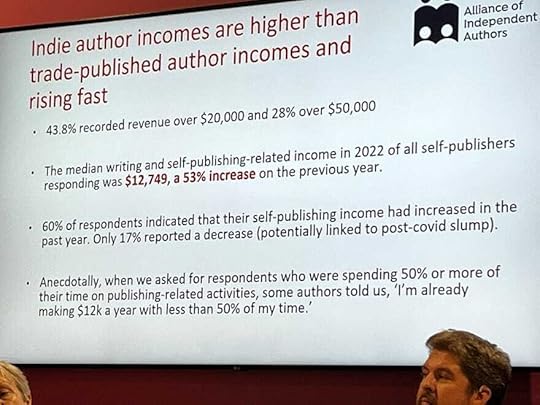
The first ever comprehensive survey of indie author income was released during the London Book Fair, showing that indie authors made more money than traditionally published authors.
Indie authors had never included in survey of author income, nor did traditional survey questions fit the range of activity indie authors do. So the Alliance of Independent Authors (ALLi) undertook one, focused on writers who devote at least 50% of their time to writing. Among the results:
👉 The average income was high: $82,607. The median, ie after they controlled for the outliers at the very top and bottom, was $12,749 and growing year over year, compared to C$9,380 in Canada*, down 27% since 2015, for traditionally published authors. (*Source: The Writers Union of Canada.)
👉 Most of the income came from book sales although there is also ancillary income.
👉 Certain genres do better than others, in particular romance, SFF, crime/thriller/detective – the same for traditional publishing.
👉 75% of book sales are from series. It’s very hard to market an individual title as you can’t leverage the marketing costs.
👉 Overall, authors who are willing to be entrepreneurial are well-positioned to do well.
The Alliance noted there a huge indie community and they hold many of their own conferences; they know anecdotally that many indie authors who are serious about writing make five and six figures.
One big caveat: this survey is gross income. ALLi explained this was because they were setting a benchmark with this initial survey. They intend to undertake it annually and will release both gross and net incomes. They also point out that many traditionally published authors incur their own marketing, publicity and travel/event-related costs beyond what the publisher is able to provide.
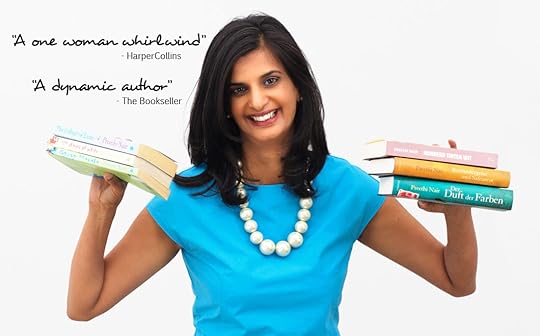 Case study #2: Preethi Nair, Kiss the Frog Productions.
Case study #2: Preethi Nair, Kiss the Frog Productions.Preethi wrote her first novel and could not get a publishing deal. So, she created her own publishing company to publish it. She also created her own PR agency under an assumed name and was nominated for publicist of the year!
The novel was a big success; HarperCollins came calling. Pretthi signed a three-book deal with them. The first did incredibly well, but then the team at HC changed. With the next book, they chose a cover she despised.
As she describes it, she’s a queer, brown woman who writes literary fiction starring brown women. But the cover image the new team chose looked like ‘chick-lit’ and featured a white woman. Preethi knew her readers would not pick it up, but the HarperCollins team would not listen to her. Finally, they changed the woman’s skin from white to yellow and refused any further changes.
The book tanked as did her subsequent one. HC offered Preethi another contract, but she’s turned it down. She’s going back to indie publishing, outsourcing all editorial, design, marketing and distribution. Her advice: if you care about control, self-publish. Invest in publicity, sales and marketing teams. Hire top quality editorial.
ALLi argues that the rest of the world as a market is growing, and traditional publishers don’t do well with foreign rights. People want to see cultures other than their own. Case in point: Amish romance is a bestseller, far beyond the numbers of Amish in the world.
We’re also seeing the dramatic rise of audiobook popularity. These panellists spoke of the need for all authors to produce them. For traditionally published authors, they advise contractually obligating a publisher to produce audiobook version if assigning those rights and/or inserting a clause that reverts those rights if not done within a certain time period.
Is indie publishing right for you? After listening to the passion and professionalism of these authors and thinking about all the writers I know or have worked with, I would say it really depends on the individual person and their entrepreneurial spirit.
Are you willing to hustle, claim publishing as your career, write constantly and take responsibility for it by committing all-in? That’s not a small question.
Indie publishing rejects much of the romanticism about a #writinglife that doesn’t pan out in reality for most authors but is seductive and pervasive anyway. You have to hustle, produce and market even if you are traditionally published, but the final responsibility doesn’t stop with you.
As I wrote a couple newsletters ago, I think it boils down to your individual definition of success, and your desire for control.
Thanks for joining me for the final instalment from my London Book Fair trip! Next month back to the regular Letterbox format.
May 9, 2023
Letterbox: Bookish & Filmish
I don’t know about you, but I gave last weekend’s coronation a pass. The pictures on the news though, all that ceremony and pomp, cheekily reminded me of an event I stumbled upon at the National Gallery when I was in London for the Book Fair.
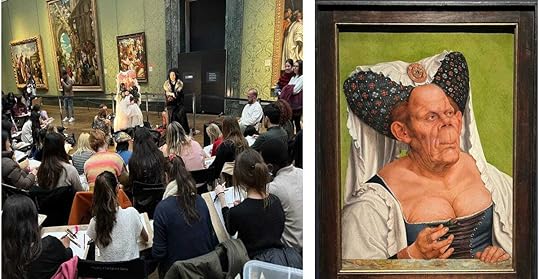
The National Gallery’s Friday Lates is free evening arts programming that varies each week; in this case Life Drawing. Two performance artists interpreted a Renaissance painting from the gallery (The Ugly Duchess) and its themes of beauty and satire, the flouting of convention, in a contemporary way. The audience happily drew along. I thought it a brilliant way to animate a public space and provide audiences a participatory, accessible artistic evening.
Talking about art. . .As promised, below are more insights learned during my recent stint at the London Book Fair. I had planned to write today about both Social Media and Indie (Self-) Publishing but there was so much to say, I’ve split in half.
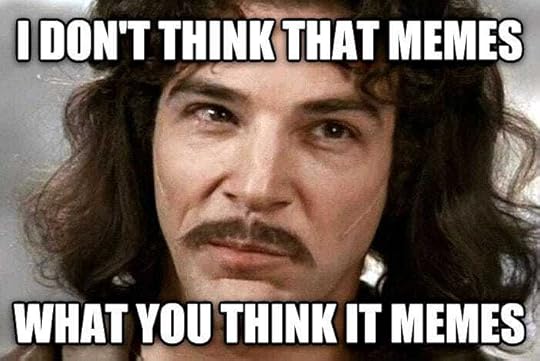
This issue will look at social media platforms + Gen Z, the demographic publishers are currently obsessed with. The next Letterbox will look at indie/self-publishing.
Keeping up With SocialAuthors complain with good reason that it’s difficult to be both chief creator and chief marketer, especially when most writers also need to work to pay the bills and usually have family obligations as well.
All true – and yet there’s nothing to be done about it.
The rare writer like Eleanor Catton can eschew all forms of social media, but that’s because she won the Booker Prize at twenty-eight, sold millions of copies and built an early following and buzz. For everyone else, it’s a necessity, whether they are intrinsically good at opening themselves up and building community online or not.

Engagement with influencers on social is now more important to the success of a book than a review in a traditional media outlet, the accepted wisdom goes.
Despair not if you absolutely can’t spend your days coming up with witty or interesting posts and your nights doom scrolling; there are other options. They include building relationships with book influencers or hiring a social media manager to build/maintain your presence. (An exception is TikTok, where ‘authenticity’ rules, except of course that’s changing.)
Best of all, start a newsletter since publishers and publicists now consider that more important than social media followers. The relationship between author and reader is direct with newsletters, and thus stickier; eyeballs may stop on a social post/reel, or they may just scroll past. And writing a newsletter is…well, writing…and thus more enjoyable to many.
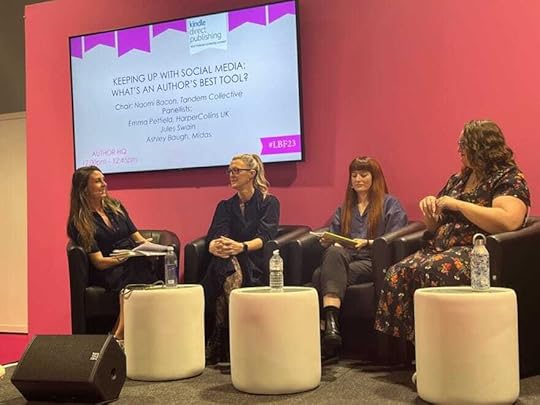
Here are some highlights from a panel of social media experts including Emma Petfield, Head of Digital Marketing, Harper Collins UK; Jules Swain, Social Media Influencer/Book Blogger; Ashley Baugh, Associate Director/Head of Digital, Midas Campaigns; and moderator Naomi Bacon from Tandem Collective.
👉Authors don’t need to be on every platform, but they need to be somewhere. Pick the platform that feels the most comfortable and make sure you engage daily or almost daily. Never allow it to become dormant.
👉Overall: most important by far is to be part of the community. Don’t just post about your own book. Be kind, be considerate, be interested in others. Engage.
👉Never react badly to a book review. There’s usually something to learn. And even if that doesn’t seem true to you in the moment, the community of book bloggers and influencers are very tight. You snark one, and all will know.
👉Be yourself, not just your book. The continual hard sales approach will turn everyone off. Readers, bloggers, social media friends – all want to see you as a human not just as an author. What is the inspiration for your writing? What’s happening in your life? What are you reading? Someone people enjoy this level of transparency, others find it difficult.
(Personally, I find myself sometimes wishing people would share less the minutiae of life such as their digestive functions. And I never mind an author trying to raise awareness of their book, especially if they don’t apologize for it.)
👉Determine who you believe your main reading demographic is, then concentrate on the social media platform where you are most likely to find them. (More below on comparisons between different platforms.)
👉Micro influencers (those with a few thousand followers) who are passionate about your book and with whom you build a relationship are far more important than those with massive followers but with whom you have no relationship. Find a loyal few influencers and cultivate a real connection.
👉Authors should keep current on what’s happening in the industry. Set up Google alerts for hashtags, industry trends, book festivals and lit orgs (especially to do with social media integration) and the platforms themselves to see what’s trending. Read blogs about publishing, writing and social media. (Yikes! A LOT of work.)
👉Understand that bloggers, influencers and content creators are people too, so engage/respond in their feed. Don’t just slide into their DMs with expectations.
👉Across all platforms, people want to engage with short, fun video content that is authentic. Don’t forget that you’re a creator; there can be a story element to it.
Each panelist was chosen because they preferred a specific platform. Below is the rationale for each, as well as the positives and negatives.

Emma Petfield, Harper Collins UK: Instagram
Why: Scopes across ages. Strong, positive community. Upside: Strength and diversity of book influencers, including micro-influencers. Downside: Video becoming more and more important for IG. Users need an innate sense of the visual. Minimum engagement: a couple times a week, preferably daily.
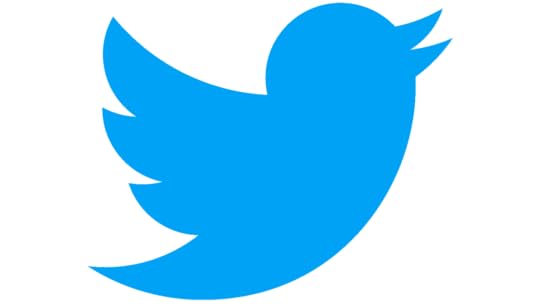
Jules Swain, Influencer/ Book Blogger: Twitter.
Why: #BookTwitter community is long established, very tight-knit, very positive. Lots of authors, editor, agents and industry. Upside: Contact with the trade/industry. Downside: Elon Musk. Twitter is no longer as influential; TikTok is the platform of the future for Book Talk. Recent changes made it harder to get noticed if you don’t subscribe. Minimum Engagement: Twitter algorithm or trends don’t work the same way as other platforms, so don’t need to post daily. But like anything, requires a consistency in time commitment.

Ashley Baugh, Associate Director/Head of Digital, Midas Campaigns: TikTok.
Why: Fun, skews younger and more genre focused, authenticity is key, less self-promotional. Upside: Most direct impact on book sales. It’s also the future of book social, pending regulatory issues. Strong influencer community, including micro influencers, who are incredibly passionate about books. Very good for self-published authors and for backlist; they users don’t care about the divisions between backlist and frontlist, self vs traditionally published. Downside: time heavy commitment.
Minimum Engagement: Daily, but really it’s a 24/7 environment where the latest trends heavily influence what’s happening; so the more you are on it, the more you get out of it. Need to follow hashtags to get a sense of what is going on. Need to find time to create content; can block create video (ie, shoot a week’s worth in one day) but danger is you miss the most current trends.
What’s next: Lemon8, a new app that’s a mix of IG and Pinterest, with a scrollable feed of pictures, hashtags, and long captions. It was created by ByteDance, the same Chinese company that owns TikTok.
The Kids Are Not Alright.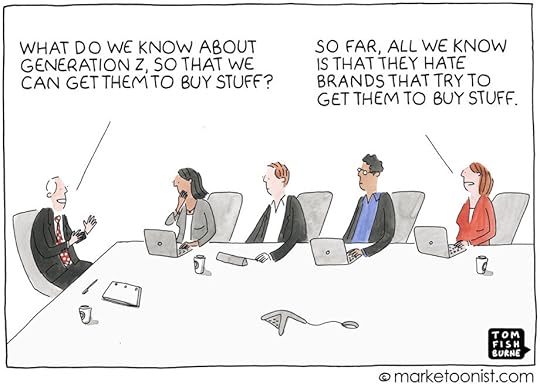
Generation Z, aka those born between 1997 and 2012, are one of the hottest conversations going in publishing.
Survey results show they spend eight hours a day online, every day, and have lots of mental health issues with 46% reporting anxiety most of the time. Obviously, these two facts are related.
This generation are very open-minded and liberal. They believe strongly in inclusivity and self-expression. Authenticity is the most important thing to them. They make excellent early adopters and are well used to shifts in technology. Their main social platforms are TikTok, Instagram and Snapchat.
Gen Z have very short attention spans and want to consume content on their own terms. This includes on mobile, with not too many words on a screen, lots of video, and gamification elements baked into everything.
On the whole, they don’t read much. 1 in 15 don’t own a book. The gains made in reading during the pandemic with this generation are gone. Too much text and choice both online and off is a barrier.
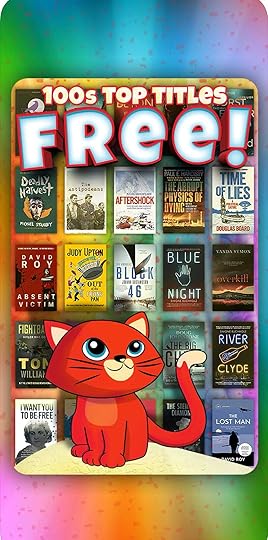
Redcards is a tech company designed to help publishers adapt content to appeal to Gen Z. They turn books into a game pack of digital cards, condensing paragraphs to sentences, and chapters to single cards. They mix in lots of visuals and gamification elements to feed the addictive behaviour that’s bred by spending eight hours a day online. And of course they ensure the ‘books’ are completely optimized for mobile because that’s where they are going to be consumed.
Difficult to see how Tolstoy could be weed-whacked into a deck of cards but decry it all you want – the publishers are paying attention. The Gen Z cohort is projected to have a disposable income of $360 billion.
Many other entertainment products compete for this generation’s short attention span. Thus, book publishers are encouraged to put fewer words on the page, serialize story in short bursts, embrace TikTok, optimize design, push mental health content, produce great audiobooks and potentially podcasts, too. The stories must be authentic and personal, and with a very high production quality.
The entrepreneurs behind Redcards are also fathers of Gen Z kids. They highlight studies that show even six minutes of reading a day decreases stress by 68%, leading to better sleep. And this is a generation that definitely needs to reduce stress and anxiety. Thus they argue there is a moral imperative – as well as a business opportunity – to figure out how to make reading attractive to Gen Z.
Authors know #BookTok – books on TikTok – has become hugely influential in bookselling, particularly for romance and YA, although that is widening.
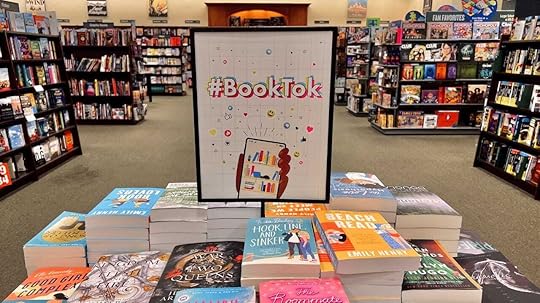
But while 60% of Gen Z use #BookTOK to find books, only 3% of TikTok activity relates to books. So, it’s not currently a huge part of the platform, which means there’s opportunity for growth.
An upside for authors and publishers: GenZ, like most digital-first readers, don’t differentiate between backlist versus frontlist in books (or film/tv for that matter). Hats off to a generation that likes what it likes and doesn’t fall prey to the ridiculous notion that books are passé six months after they hit bookstores.
For writers, I think Gen Z’s embrace of serialization and web novels could spark some creative ideas, while every publisher needs to consider investing in audiobook versions (to which I have come addicted since the pandemic) of their titles.
One thing is clear – this demographic is forcing change in the content they consume and the method by which they consume it. They are far more influential on publishing than millennials, and it behoves any writer born before 1997 to take the time to better understand these potential new readers.
Until next time, friends! Of all the subjects I learned about, indie publishing had the most shocking insights. Look forward to sharing with you in the next instalment.
Today, I have a fun surprise to share with you...
I’ve teamed up with 30 fantastic authors to give away a huge collection of thriller novels to 2 lucky winners. And the Grand Prize winner also gets a Reacher swag pack worth $250.
Enter the giveaway by clicking here 👉 https://www.booksweeps.com/giveaway/w...
Good luck and enjoy!




